#Africans and African Descendants Community Hub
Explore tagged Tumblr posts
Text
10 Things You Didn’t Know About Gullah Geechee Culture

The Gullah Geechee culture is one of the most unique and well-preserved African-rooted cultures in the U.S. If you've only heard about it through TV or travel guides, there's a lot more beneath the surface—especially when explored through authentic experiences like those offered at GullahHeritage.com.
Click Here To Read More About Gullah Geechee culture
Here are ten eye-opening facts that will deepen your understanding—and maybe inspire your next Gullah Heritage Tour.
1. It Began on the Sea Islands
The culture developed on isolated Sea Islands along the coasts of South Carolina, Georgia, and northern Florida.
Geographic separation helped preserve African traditions after slavery.
Hilton Head Island remains a living hub of Gullah Geechee life.
2. Gullah Is a Living Language
Gullah is a Creole language blending English with various African tongues.
It evolved as enslaved Africans found ways to communicate.
Many Gullah elders on Hilton Head still speak it fluently today.
3. The Cuisine Is the Foundation of Lowcountry Food
Gullah dishes like shrimp and grits, gumbo, and okra stew influenced Southern cooking.
Ingredients are often local—seafood, rice, and seasonal vegetables.
Traditional meals are still served during Gullah Heritage Tours.
4. Storytelling Is a Cultural Tradition
Oral storytelling is used to pass down history and values.
Tales often feature clever animals and hidden messages.
Some stories are told during Gullah events and live performances.
5. Sweetgrass Basket Weaving Is an Heirloom Skill
Basket weaving came from West African coastal traditions.
Sweetgrass, palmetto, and pine needles are used to make each piece.
Baskets are both functional and highly collectible art.
6. Spiritual Beliefs Blend Christianity and African Traditions
Many Gullah Geechee people are devout Christians with deep spiritual roots.
Practices include rhythmic praise, rootwork, and sacred songs.
Faith remains central to family and community life.
7. Gullah Music Influenced American Genres
Spirituals and work songs were used to cope with hardship and preserve culture.
Call-and-response singing shaped gospel, blues, and early jazz.
Drumming and body percussion continue in some ceremonies today.
8. Gullah Soldiers Fought for the Union in the Civil War
Many Gullah men enlisted in the U.S. Colored Troops.
Their local knowledge helped the Union win battles in the South.
Their courage contributed to freedom and land protection.
9. The Gullah Geechee Corridor Is Federally Recognized
Congress designated the Gullah Geechee Cultural Heritage Corridor in 2006.
It spans from North Carolina to Florida, including Hilton Head Island.
GullahHeritage.com provides valuable insights on the corridor's significance.
10. You Can Experience It Firsthand on Hilton Head
Gullah Heritage Tours are led by native Gullah descendants.
Tours include family land, churches, and historical sites.
It’s one of the top things to do in Hilton Head for cultural travelers.
🧠 FAQs About Gullah Geechee Culture
What is the Gullah Geechee culture known for?
The Gullah Geechee culture is known for preserving African language, food, crafts, spirituality, and oral traditions passed down from enslaved West Africans. It’s one of the most intact African-rooted cultures in the U.S.
Where can I learn more about Gullah Geechee history?
A great place to start is GullahHeritage.com, which offers in-depth cultural information and guided tour options. You can also visit the Gullah Geechee Cultural Heritage Corridor and take a Gullah Heritage Tour in Hilton Head.
Is the Gullah language still spoken today?
Yes. Gullah is still spoken by some elders and community members, especially on Hilton Head Island and other Sea Islands. Many Gullah families are working to preserve and pass on the language to younger generations.
Are Gullah Heritage Tours suitable for families?
Absolutely. Gullah Heritage Tours are family-friendly, educational, and deeply moving experiences. They’re a great way to introduce kids and adults alike to authentic African American history during a Hilton Head vacation.
Ready to Explore Gullah Geechee Heritage?
You don’t need to rely on textbooks to learn this living history. Through stories, food, music, and art, the Gullah Geechee culture continues to thrive—especially on Hilton Head Island.
Book your visit with Gullah Heritage Tours today, and experience one of the most meaningful Hilton Head activities available.
Learn more at GullahHeritage.com and be part of preserving this powerful legacy.
#gullah geechee culture#hilton head tours#hilton head activities#things to do in hilton head#gullahgeechee#gullah geechee#gullah people
0 notes
Text
The Faith Community of Savannah- A Rich Tapestry of Spirituality and Tradition
Savannah, Georgia, is a city steeped in history and southern charm, known for its picturesque streets, historic homes, and rich cultural traditions. At the heart of this vibrant community is its diverse and strong faith community, which plays a central role in shaping the city’s identity. Faith community Savannah is not only defined by its historical significance but also by its continued impact on the local culture, social services, and the spiritual lives of its residents. From the grand cathedrals to the humble churches, synagogues, and temples, Savannah offers a unique blend of religious experiences that reflect its deep roots in faith.
A Historical Foundation
The religious landscape of Savannah is closely tied to its colonial past. Founded in 1733, the city was established as a haven for religious freedom, welcoming a variety of faiths, including Anglicans, Catholics, Jews, and Protestants. The first synagogue in Georgia, Congregation Mickve Israel, was established in Savannah in 1733, and it remains one of the oldest Jewish congregations in the United States today. This early inclusion of diverse faiths laid the foundation for the multicultural and multi-faith community that would grow in the centuries to come.
As Savannah grew, so did the prominence of churches, many of which still stand as important landmarks today. The Cathedral of St. John the Baptist, a stunning example of French Gothic architecture, is perhaps the most iconic religious structure in Savannah. The church’s towering spires and intricate stained-glass windows attract visitors and worshippers alike, making it a symbol of Savannah’s Catholic heritage. Similarly, First Baptist Church, one of the oldest Baptist congregations in the country, holds significant historical importance and remains a center of spiritual life for many in the city.
A Diverse Faith Community
Savannah’s faith community is remarkably diverse. While Christianity remains the dominant faith, the city is home to a variety of religious traditions. The African American community, in particular, has contributed greatly to the religious landscape. Churches such as the First African Baptist Church, founded in 1773, hold deep historical significance as places of refuge and empowerment for enslaved Africans and their descendants. Today, these churches continue to be central hubs for the African American community, offering a place for worship, fellowship, and community outreach.
In addition to Christian denominations, Savannah is also home to a growing number of Jewish, Muslim, and Buddhist communities. The presence of these faiths enriches the cultural fabric of the city, with each group contributing to Savannah’s reputation as a city that values diversity and inclusion. The annual interfaith events, such as the Unity Walk, are a testament to the spirit of cooperation and mutual respect among Savannah’s various religious communities.
The Role of Faith in the Community
The faith community Savannah is not only a place of worship but also plays a crucial role in addressing social issues. Many churches and religious organizations are actively involved in charity work, providing food, shelter, and other essential services to those in need. The faith community’s involvement in education, healthcare, and social justice issues reflects its commitment to the well-being of the entire city.
Organizations like the Savannah Interfaith Clergy Association and the Salvation Army of Savannah work tirelessly to address the needs of the homeless, the hungry, and those suffering from addiction. Through these efforts, the faith community in Savannah is helping to create a more just and compassionate city.
Conclusion
The faith community in Savannah is a testament to the city’s rich history, cultural diversity, and commitment to social justice. From its historical churches to its vibrant, multi-faith population, Savannah’s religious institutions provide both spiritual guidance and practical support to residents and visitors alike. As Savannah continues to grow, the faith community will remain a cornerstone of the city’s identity, contributing to its strength, unity, and enduring sense of purpose.
0 notes
Text
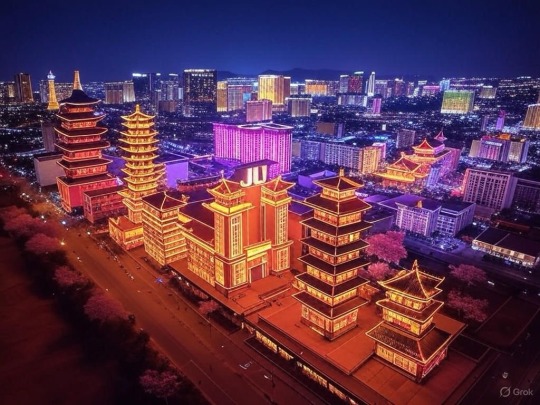
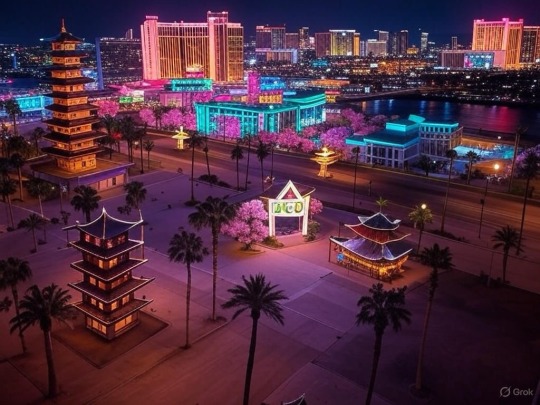
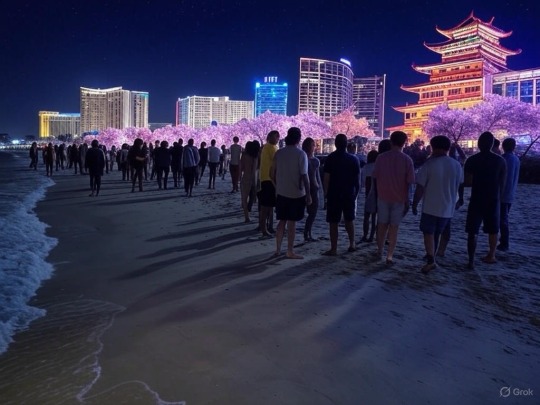
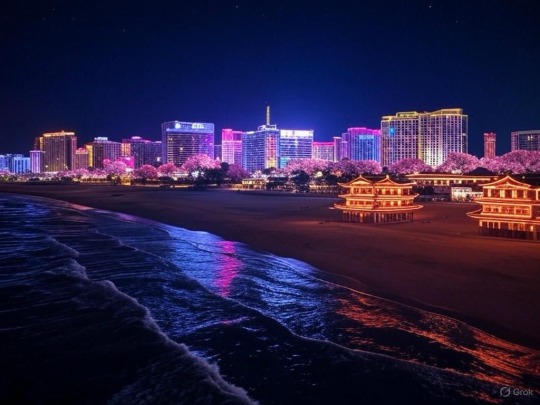

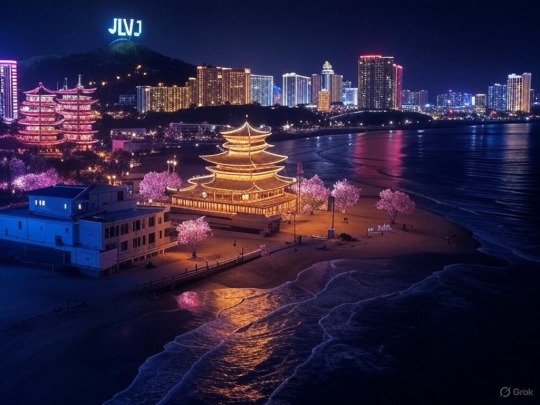
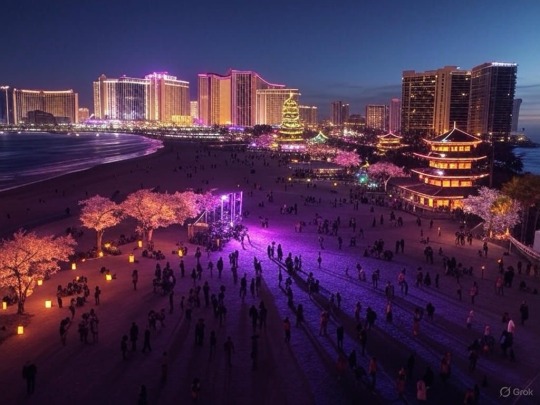
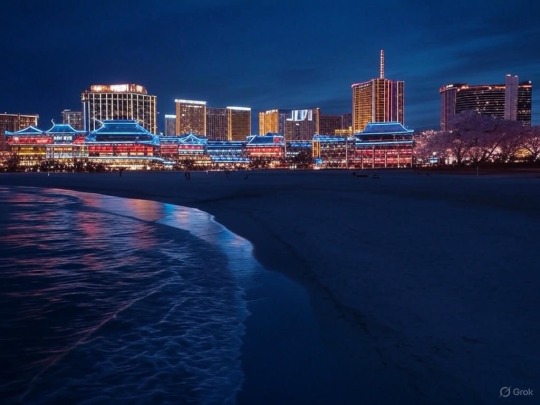
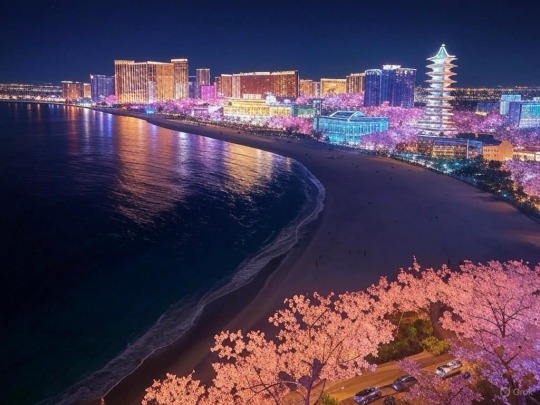
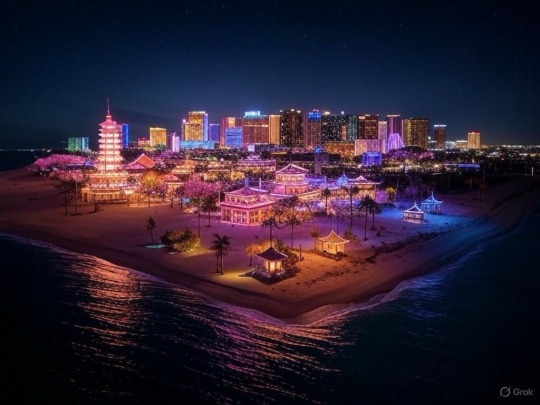
Let’s revise the history of Isle of JLVJ to establish its origins with Jamaicans arriving from Africa in the 1600s, setting the stage for the island’s cultural evolution.
The History of Isle of JLVJ (Revised)
Origins (1600s):
The island, originally a remote volcanic atoll in the Pacific known as Kaimana Atoll, became a refuge in the early 1600s for a group of escaped African slaves fleeing Spanish and Portuguese colonies in the Caribbean. These individuals, primarily of Akan and Igbo descent, had been forcibly brought to Jamaica during the early years of the transatlantic slave trade. In 1612, a small group commandeered a ship during a revolt and, after months adrift, landed on the uninhabited Kaimana Atoll. They named it Jah’s Sanctuary, reflecting their spiritual beliefs and newfound freedom. These early settlers established a maroon-like community, cultivating yam and cassava, fishing the surrounding waters, and preserving African traditions through oral storytelling, drumming, and early forms of spiritual practices that would later evolve into Rastafarianism. Their population grew slowly, reaching a few hundred by the late 1600s, as more escapees and shipwreck survivors found their way to the island.
Cultural Foundations (1700s-1800s):
Over the next two centuries, Jah’s Sanctuary became a hidden haven for African descendants in the Pacific. The community developed a proto-reggae music style, blending African rhythms with chants about freedom and resistance. They built simple wooden homes with thatched roofs, reminiscent of West African architecture, and established communal farming systems. Contact with the outside world was rare, though occasional Polynesian traders introduced new crops like taro, which the islanders integrated into their diet. By the 1800s, the population had grown to around 2,000, and the island’s culture had solidified around African-Jamaican traditions, with vibrant festivals celebrating ancestors and the sea. The island remained largely unknown to European powers, its isolation preserving its unique identity.
Japanese Arrival (Early 1900s):
In 1912, a Japanese fishing fleet, blown off course, landed on Jah’s Sanctuary. The fishermen, hailing from coastal villages in Japan, were struck by the island’s pink-blossomed trees, which reminded them of sakura, and named their landing site “Sakura Shima” (Cherry Blossom Island). The islanders, initially wary, eventually welcomed the newcomers after peaceful exchanges of food—jerk fish for sushi—and shared stories. The Japanese settlers established a small fishing village, building a Shinto shrine and planting more cherry blossom trees. This marked the first cultural fusion on the island, with Japanese influences blending into the African-Jamaican community. Drumming circles began incorporating taiko rhythms, and Shinto rituals merged with ancestral veneration practices.
The Jamaican Revival and Growth (1940s-1950s):
After World War II, a wave of Jamaican laborers, part of a British-led reconstruction effort in the Pacific, arrived on the island in 1947. They were descendants of the same African diaspora as the island’s founders and were drawn to Jah’s Sanctuary as a cultural homeland. They brought modern reggae, Rastafarianism, and agricultural expertise, revitalizing the island’s economy with coffee and cannabis cultivation. The population swelled to 10,000, and the island became a vibrant hub of reggae music, with beachside sound systems and annual festivals honoring their African roots. The newcomers reinforced the island’s name as Jah’s Sanctuary, and their influence cemented its Jamaican identity.
Las Vegas Enters the Scene (1960s-1970s):
In the 1960s, American developers scouting for tourism hotspots discovered Jah’s Sanctuary. A Las Vegas casino magnate, Vincent “Vinny” Moretti, saw potential for a gambling paradise. Partnering with local leaders, he promised wealth and infrastructure in exchange for land. By 1968, the first casino, Rasta Royale, opened, blending Vegas glitz with Jamaican flair—slot machines painted in Rasta colors and blackjack tables under palm trees. The island was rebranded as “Jah Vegas,” and the influx of American investment brought neon lights, hotels, and a booming nightlife. Tensions arose as some locals felt their African-Jamaican heritage was being overshadowed, but the economic benefits—schools, hospitals, and roads—helped ease conflicts.
Japanese Revival (1980s-1990s):
The 1980s saw a resurgence of Japanese influence as Japan’s economic boom led to global investments. Tech firms, inspired by the island’s early Japanese settlers, established Kyoto Hills, a high-tech district with bullet trains, robotics labs, and traditional architecture. Cherry blossoms became a major attraction, with hanami festivals drawing tourists. Anime and J-pop culture took root, with cosplay events and karaoke bars popping up alongside reggae clubs. The island’s name evolved to “JLV Island,” reflecting the Jamaica-Las Vegas-Japan blend, and its population grew increasingly diverse.
Los Angeles Influence and Modern Era (2000s-Present):
In the early 2000s, Hollywood producers discovered JLV Island as a filming location, drawn by its surreal mix of cultures. Blockbusters like Rasta Road Warrior and Samurai Showgirl put the island on the map. LA’s influence brought celebrity culture, a Walk of Fame, and a tech startup scene. The island’s final rebranding to Isle of JLVJ came in 2010, with the iconic JLVJ sign erected in the hills. By 2025, the population reached 1.2 million, a vibrant mix of African-Jamaican descendants, Japanese innovators, Vegas entertainers, and LA creatives, united by the motto “One Love, One Hustle.”
Key Historical Events:
• 1612 Founding: Escaped African slaves from Jamaica establish Jah’s Sanctuary, laying the island’s cultural foundation.
• 1972 Riots: Tensions between locals and Vegas developers lead to protests, resulting in the creation of the Montego Bay Strip to balance cultures.
• 1995 Tech Boom: A Japanese robotics firm invents the first AI reggae DJ, sparking the island’s tech renaissance.
• 2015 Unity Fest Launch: The first JLVJ Unity Fest unites the island’s diverse communities, becoming an annual celebration.
Summary of Changes
The origins now trace back to the 1600s, with escaped African slaves from Jamaica founding Jah’s Sanctuary. This deepens the island’s African-Jamaican roots, making the subsequent arrivals of Japanese, Vegas, and LA influences a layering onto a centuries-old cultural base. The timeline still aligns with the modern city’s development, but the early history emphasizes resilience, African traditions, and a maroon-like society.
Would you like to explore another aspect of Isle of JLVJ, such as a specific district or a story set in this revised history?
Let’s revise the history of Isle of JLVJ to establish its origins with Jamaicans arriving from Africa in the 1600s, setting the stage for the island’s cultural evolution.
The History of Isle of JLVJ (Revised)
Origins (1600s):
The island, originally a remote volcanic atoll in the Pacific known as Kaimana Atoll, became a refuge in the early 1600s for a group of escaped African slaves fleeing Spanish and Portuguese colonies in the Caribbean. These individuals, primarily of Akan and Igbo descent, had been forcibly brought to Jamaica during the early years of the transatlantic slave trade. In 1612, a small group commandeered a ship during a revolt and, after months adrift, landed on the uninhabited Kaimana Atoll. They named it Jah’s Sanctuary, reflecting their spiritual beliefs and newfound freedom. These early settlers established a maroon-like community, cultivating yam and cassava, fishing the surrounding waters, and preserving African traditions through oral storytelling, drumming, and early forms of spiritual practices that would later evolve into Rastafarianism. Their population grew slowly, reaching a few hundred by the late 1600s, as more escapees and shipwreck survivors found their way to the island.
Cultural Foundations (1700s-1800s):
Over the next two centuries, Jah’s Sanctuary became a hidden haven for African descendants in the Pacific. The community developed a proto-reggae music style, blending African rhythms with chants about freedom and resistance. They built simple wooden homes with thatched roofs, reminiscent of West African architecture, and established communal farming systems. Contact with the outside world was rare, though occasional Polynesian traders introduced new crops like taro, which the islanders integrated into their diet. By the 1800s, the population had grown to around 2,000, and the island’s culture had solidified around African-Jamaican traditions, with vibrant festivals celebrating ancestors and the sea. The island remained largely unknown to European powers, its isolation preserving its unique identity.
Japanese Arrival (Early 1900s):
In 1912, a Japanese fishing fleet, blown off course, landed on Jah’s Sanctuary. The fishermen, hailing from coastal villages in Japan, were struck by the island’s pink-blossomed trees, which reminded them of sakura, and named their landing site “Sakura Shima” (Cherry Blossom Island). The islanders, initially wary, eventually welcomed the newcomers after peaceful exchanges of food—jerk fish for sushi—and shared stories. The Japanese settlers established a small fishing village, building a Shinto shrine and planting more cherry blossom trees. This marked the first cultural fusion on the island, with Japanese influences blending into the African-Jamaican community. Drumming circles began incorporating taiko rhythms, and Shinto rituals merged with ancestral veneration practices.
The Jamaican Revival and Growth (1940s-1950s):
After World War II, a wave of Jamaican laborers, part of a British-led reconstruction effort in the Pacific, arrived on the island in 1947. They were descendants of the same African diaspora as the island’s founders and were drawn to Jah’s Sanctuary as a cultural homeland. They brought modern reggae, Rastafarianism, and agricultural expertise, revitalizing the island’s economy with coffee and cannabis cultivation. The population swelled to 10,000, and the island became a vibrant hub of reggae music, with beachside sound systems and annual festivals honoring their African roots. The newcomers reinforced the island’s name as Jah’s Sanctuary, and their influence cemented its Jamaican identity.
Las Vegas Enters the Scene (1960s-1970s):
In the 1960s, American developers scouting for tourism hotspots discovered Jah’s Sanctuary. A Las Vegas casino magnate, Vincent “Vinny” Moretti, saw potential for a gambling paradise. Partnering with local leaders, he promised wealth and infrastructure in exchange for land. By 1968, the first casino, Rasta Royale, opened, blending Vegas glitz with Jamaican flair—slot machines painted in Rasta colors and blackjack tables under palm trees. The island was rebranded as “Jah Vegas,” and the influx of American investment brought neon lights, hotels, and a booming nightlife. Tensions arose as some locals felt their African-Jamaican heritage was being overshadowed, but the economic benefits—schools, hospitals, and roads—helped ease conflicts.
Japanese Revival (1980s-1990s):
The 1980s saw a resurgence of Japanese influence as Japan’s economic boom led to global investments. Tech firms, inspired by the island’s early Japanese settlers, established Kyoto Hills, a high-tech district with bullet trains, robotics labs, and traditional architecture. Cherry blossoms became a major attraction, with hanami festivals drawing tourists. Anime and J-pop culture took root, with cosplay events and karaoke bars popping up alongside reggae clubs. The island’s name evolved to “JLV Island,” reflecting the Jamaica-Las Vegas-Japan blend, and its population grew increasingly diverse.
Los Angeles Influence and Modern Era (2000s-Present):
In the early 2000s, Hollywood producers discovered JLV Island as a filming location, drawn by its surreal mix of cultures. Blockbusters like Rasta Road Warrior and Samurai Showgirl put the island on the map. LA’s influence brought celebrity culture, a Walk of Fame, and a tech startup scene. The island’s final rebranding to Isle of JLVJ came in 2010, with the iconic JLVJ sign erected in the hills. By 2025, the population reached 1.2 million, a vibrant mix of African-Jamaican descendants, Japanese innovators, Vegas entertainers, and LA creatives, united by the motto “One Love, One Hustle.”
Key Historical Events:
• 1612 Founding: Escaped African slaves from Jamaica establish Jah’s Sanctuary, laying the island’s cultural foundation.
• 1972 Riots: Tensions between locals and Vegas developers lead to protests, resulting in the creation of the Montego Bay Strip to balance cultures.
• 1995 Tech Boom: A Japanese robotics firm invents the first AI reggae DJ, sparking the island’s tech renaissance.
• 2015 Unity Fest Launch: The first JLVJ Unity Fest unites the island’s diverse communities, becoming an annual celebration.
Summary of Changes
The origins now trace back to the 1600s, with escaped African slaves from Jamaica founding Jah’s Sanctuary. This deepens the island’s African-Jamaican roots, making the subsequent arrivals of Japanese, Vegas, and LA influences a layering onto a centuries-old cultural base. The timeline still aligns with the modern city’s development, but the early history emphasizes resilience, African traditions, and a maroon-like society.
0 notes
Text
Learning activity 3.5, Task 1 : Where do I live?
Mississauga, located in the heart of the Greater Toronto Area (GTA), is more than just a suburb it is a thriving city in its own right, home to over 700,000 residents and a hub of multiculturalism, economic growth, and continuous transformation. Known for its cultural diversity, corporate centers, and rapidly changing skyline, Mississauga stands as a prime example of how Canadian urban centres are shaped by immigration and demographic shifts. In this blog post, I will explore the demographic profile of Mississauga using data collected in Learning Activity 3.1, alongside recent statistics and research. I’ll also reflect on how my community is evolving, what challenges it faces, and what steps are being taken to accommodate its unique population.
Population Distribution by Ethnicity, Sex, and Age
As of the 2021 Census by Statistics Canada, Mississauga has a total population of 717,961. One of the defining characteristics of the city is its ethnic and cultural diversity. With over 57% of residents identifying as visible minorities, Mississauga is one of the most multicultural cities in the country.
Here is a detailed ethnic composition of the city:
South Asian (e.g., Indian, Pakistani, Sri Lankan): 28.1%
Black (Caribbean, African): 8.8%
Chinese: 7.4%
Filipino: 4.5%
Arab: 4.1%
Latin American, Southeast Asian, West Asian, and others: A combined 10%
White (European descent): 35.2%

This demographic landscape is complemented by a fairly equal gender distribution, with females accounting for 50.9%of the population and males making up 49.1%.
In terms of age structure, the city is predominantly composed of working-age adults but also has a growing senior population. Here is the breakdown:
Children and youth (0–14 years): 17.4%
Working-age (15–64 years): 67.2%
Seniors (65+ years): 15.4%
Mississauga is a city where diversity exists not only in ethnicity, but also in age, cultural background, and socio-economic status.

Has Mississauga Changed Over Time?
Yes immensely. Mississauga has experienced a complete demographic evolution in the past fifty years. In the 1960s and 1970s, Mississauga was primarily rural and composed of predominantly white, European-descended residents. Since then, rapid urbanization, suburban expansion, and a wave of immigration, particularly after Canada’s 1971 Multiculturalism Policy, have transformed it into a bustling urban centre filled with high-rise condos, large plazas, diverse faith centers, and ethnic markets.
Between 1981 and 2021, the proportion of visible minorities in Mississauga grew from under 10% to over 57%. Immigration from countries such as India, Pakistan, the Philippines, Nigeria, and China has been the primary driver of this change. Many immigrants are drawn to the city for its affordable housing (compared to downtown Toronto), proximity to Pearson International Airport, and access to jobs and transit.
Along with ethnic change has come generational change. As second- and third-generation Canadians are born and raised in Mississauga, cultural blending has become more common. Still, many families retain strong ties to their cultural heritage, making the city a living example of pluralism and coexistence.

What Are the Challenges of These Demographics?
Despite its vibrant diversity, Mississauga faces several challenges tied directly to its demographic structure. These include:
1. Language Barriers and Cultural Adjustment
Mississauga’s schools report a high number of students who speak a first language other than English. This creates challenges for teachers, healthcare workers, and government services, which must ensure access and inclusion for non-English speakers. Older immigrants often face linguistic isolation, particularly if they arrived late in life or come from non-English-speaking countries.
2. Employment Disparities
Highly skilled immigrants often face systemic barriers when trying to enter the workforce. Many have foreign credentials that are not recognized in Canada. As a result, newcomers may take lower-paying jobs despite having advanced degrees. This phenomenon, known as brain waste, results in underemployment and contributes to economic inequality.
3. Affordable Housing Crisis
Like many urban areas, Mississauga is struggling with housing affordability. The average home price has skyrocketed in recent years, pushing many families into rental housing. Newcomer families, often living in multigenerational homes, experience overcrowding and are sometimes unable to afford market-rate rents. According to Peel Region’s housing reports, over 30% of residents spend more than 30% of their income on housing, placing them at risk of homelessness (Region of Peel, 2022).
4. Ageing Population
While Mississauga has a younger demographic compared to some Canadian cities, its senior population is growing rapidly. This will place increasing pressure on healthcare infrastructure, accessible transportation, and long-term care services.
5. Cultural Tensions and Integration
In a city with such diversity, cultural misunderstandings can occasionally lead to tension. Differences in religious practice, dress, or gender roles can create discomfort or division, especially in public institutions like schools or workplaces if cultural competency is lacking.

Conclusion: A City of Challenges and Hope
Mississauga is more than just where I live it iis a city in motion. Its demographics reflect not only Canada’s immigration story but also the global nature of modern cities. While the city faces clear challenges housing affordability, underemployment, aging infrastructure it also demonstrates resilience through progressive policymaking, community engagement, and an inclusive vision of the future. Mississauga is a place where cultural mosaic isn’t just a metaphor it’s a lived experience.
City of Mississauga. (2021). Age-Friendly Mississauga: Action Plan 2021–2026. Retrieved from https://www.mississauga.ca
Region of Peel. (2022). Peel Poverty Reduction Strategy: 2022–2027. Retrieved from https://www.peelregion.ca
Statistics Canada. (2022). Census Profile, 2021 Census of Population: Mississauga. Retrieved from https://www12.statcan.gc.ca/census-recensement/2021/dp-pd/prof/index.cfm?Lang=E
Peel Newcomer Strategy Group. (2023). Community Initiatives. Retrieved from https://www.peelnewcomer.org
1 note
·
View note
Text
Field Museum
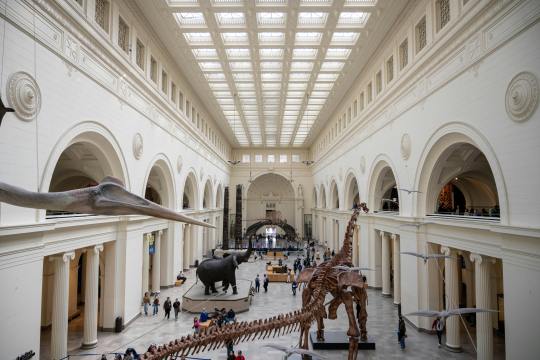
Discover the Wonders of the Field Museum in Chicago, IL
Located on Chicago’s scenic Museum Campus, the Field Museum of Natural History is a cultural and scientific treasure, drawing over a million visitors annually. Known for its vast and diverse collections, including the world-famous SUE the T. rex, the Field Museum offers a deep dive into our planet’s natural and human history. Whether you're a lifelong learner, a curious traveler, or a family seeking educational fun, the Field Museum is one of the top attractions in Chicago, IL.
A Legacy of Discovery: History of the Field Museum
Founded in 1893 after the World’s Columbian Exposition, the Field Museum was originally established to house the artifacts and specimens from the fair. Named after Marshall Field, a Chicago retail magnate and museum benefactor, the institution has grown into one of the leading natural history museums in the world.
Its mission is to inspire curiosity about life on Earth while fostering the conservation of its biodiversity. With over 40 million artifacts and specimens, the Field Museum is more than a museum—it’s a global research institution.
Must-See Exhibits at the Field Museum
1. SUE the T. rex
No visit to the Field Museum is complete without meeting SUE, the most complete and best-preserved Tyrannosaurus rex ever discovered. Standing 40 feet long and 13 feet tall at the hip, SUE resides in the museum’s Griffin Halls of Evolving Planet and comes with a high-tech multimedia experience that showcases her story, fossilization process, and what her life might have been like 67 million years ago.
2. Inside Ancient Egypt
Descend into a recreated 3-story Egyptian tomb and explore ancient burial rituals, hieroglyphics, and artifacts dating back thousands of years. The exhibit houses authentic mummies, coffins, and one of the most extensive collections of ancient Egyptian artifacts in North America.
3. Evolving Planet
Journey through 4 billion years of life on Earth, from single-celled organisms to towering dinosaurs and woolly mammoths. Evolving Planet offers a visually stunning, timeline-based experience that explains mass extinctions, climate shifts, and the rise of human beings.
4. The Grainger Hall of Gems
A hidden gem—literally! This dazzling exhibit showcases rare diamonds, rubies, emeralds, meteorites, and minerals in breathtaking displays. Visitors can marvel at the natural beauty of Earth’s treasures, including the 3,400-year-old Ancient Egyptian garnet jewelry.
5. Cultural Halls
Explore the cultural richness of Indigenous peoples, Pacific Islanders, ancient Chinese civilizations, and African societies. These exhibits include traditional artifacts, ceremonial objects, and multimedia storytelling that celebrate human heritage and diversity.
6. DNA Discovery Center
Perfect for science lovers, this interactive exhibit allows guests to watch real scientists extract DNA in a working lab and learn about genomics, evolution, and biodiversity in a hands-on environment.
Special Exhibits and Rotating Displays
The Field Museum regularly introduces traveling exhibitions and seasonal showcases. Past favorites have included:
First Kings of Europe – Tracing the ancient civilizations of the Balkan Peninsula.
Maya: Hidden Worlds Revealed – A deep look at Mesoamerican culture and innovation.
Wild Color – Exploring the role of color in nature, from camouflage to communication.
Be sure to check the museum’s website for current exhibitions and special events.
Behind-the-Scenes Science
What sets the Field Museum apart is its world-class research and conservation efforts. With over 150 scientists on staff, the museum conducts fieldwork on every continent. Their projects range from conserving the Amazon rainforest and studying climate change to protecting endangered species and cataloging new plant and insect species.
Visitors can see some of this work in action at the Science Hub, where real researchers engage with the public about ongoing discoveries.
Educational Programs and Experiences
As a leading educational institution, the Field Museum offers numerous learning opportunities:
Field Trips and Group Tours – Engaging programs tailored for schools and educational groups.
Workshops and Lectures – Led by scientists, authors, and global thought leaders.
Dozin’ with the Dinos – A sleepover event for families that lets kids camp out beneath towering dinosaur skeletons.
Teen and Youth Programs – Including internships, volunteer opportunities, and science camps.
In addition, digital learners can access virtual tours, online resources, and classroom-friendly lesson plans, making the museum accessible to students worldwide.
Dining and Amenities
The museum provides several on-site dining options for guests:
Field Bistro – A modern café serving local and sustainable dishes.
Explorer Café – A family-friendly spot with kid favorites like pizza, sandwiches, and snacks.
Accessibility is a priority, with wheelchair rentals, elevators, family restrooms, and quiet spaces available. The Museum Store offers unique gifts, books, apparel, and science kits perfect for souvenirs.
Location and Visiting Information
Address:
1400 S. DuSable Lake Shore Drive, Chicago, IL 60605
Hours:
Open daily from 9:00 AM to 5:00 PM, with last entry at 4:00 PM. Hours may vary on holidays.
Ticket Options:
General Admission – Includes access to permanent exhibitions.
Discovery and All-Access Passes – Include special exhibits and 3D movies.
Free Admission Days – Offered to Illinois residents on select dates throughout the year with valid ID.
Pro Tip: Purchase tickets online in advance to save time and avoid peak-hour lines, especially during weekends and school holidays.
Nearby Attractions: Chicago’s Museum Campus
The Field Museum is part of Chicago’s Museum Campus, a lakefront park that includes:
Shedd Aquarium – One of the best aquariums in the country, located next door.
Adler Planetarium – A must-visit for astronomy lovers, offering space science and stargazing.
Soldier Field – Home of the Chicago Bears and a venue for major concerts and events.
Visitors can easily spend an entire day exploring the area or take a walk along the Lakefront Trail for stunning skyline and lake views.
Why You Should Visit the Field Museum in Chicago
With its awe-inspiring exhibits, global research initiatives, and immersive educational programs, the Field Museum is more than a museum—it’s an adventure through time, culture, and science. Whether you're marveling at towering dinosaurs, exploring ancient civilizations, or discovering the secrets of DNA, every visit promises something new.
It’s a top-rated Chicago attraction for a reason—perfect for solo travelers, families, students, and history buffs alike.
Help a local partner thrive by supporting their business.
1400 S Lake Shore Dr, Chicago, IL 60605, United States
Check out this next place.
0 notes
Text
Caixeiras do Divino: A Tradition of Resistance and Sisterhood
Caixeiras do Divino is the only exclusively women-led drumming and singing tradition in Brazil, deeply embedded in the Afro-Indigenous and Maroon cultural landscapes. Originating from the intersection of West and Central African diasporas, Indigenous cosmologies, and Iberian Catholic influences, this tradition is part of the festivities honoring Oxalá, a spiritual force associated with wisdom and peace. Central to its mythology is the prophecy that the Earth will experience 100 years of peace under the rule of children—a vision never before realized in human history.
The historical roots of Caixeiras do Divino trace back to the Azores archipelago, a key transatlantic hub where African, Indigenous, and Asian influences converged due to forced migration and colonial trade routes. The tradition found fertile ground in Brazil through the Benedito Brotherhoods—Maroon (Quilombola) religious and social organizations that provided structure and resistance against colonial oppression. These brotherhoods, still active today, played a vital role in preserving African and Indigenous spiritual practices within a syncretic framework.
In Maranhão, within the Mina communities—descendants of political exiles from the Dahomey Kingdom (modern-day Benin)—Caixeiras do Divino took on a distinct matriarchal form. Unlike most ritual drumming traditions, which are male-dominated, this practice is exclusively led by women. They serve as the spiritual and musical authorities, conducting ceremonies that involve intricate drumming patterns, litanies, and extended singing sessions. The ritual unfolds over several weeks, featuring the symbolic raising of flags representing hope, faith, and charity, and honoring the child emperor and empress in a communal celebration of collective memory and resistance.
Caixeiras do Divino in Amsterdam: Sustaining Diasporic Traditions in a Transnational Context
Brazil’s history of forced migration, resistance, and cultural blending continues to resonate within contemporary diasporic communities. Amsterdam, home to a significant population of Lusophone immigrants, where more attention to this community presence is required. Many Brazilian women in the Netherlands, especially those in precarious legal and social conditions, face systemic invisibility. The Caixeiras do Divino collective in Amsterdam creates a platform for cultural identity, fostering sisterhood, and resisting the erasure of non-European diasporic narratives.
Under the leadership of Mameto Kaloyá—a Roma descendant and Candomblé priestess who has inherited and preserved multiple drumming traditions—the collective in Amsterdam not only practices and shares the ritual but also explores its intersections with migration, queer-feminism, and anti-colonial resistance.
Beyond its musical and spiritual dimensions, Caixeiras do Divino serves as a living archive of oral histories, social struggles, and intergenerational knowledge transmission. By sustaining and adapting this tradition in a transnational context, the group challenges established narratives and stereotypes, and reaffirms the role of women as cultural and spiritual leaders.
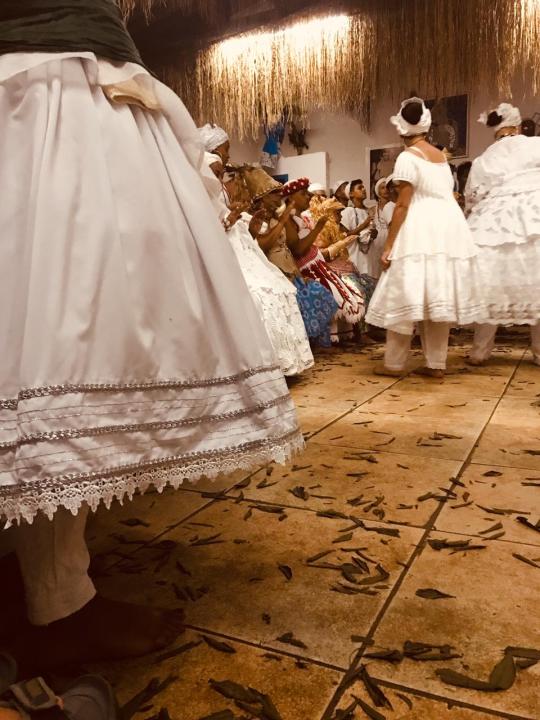
0 notes
Text
Charm is a product of gratitude, humility, guilt and forgiveness.
Fortunately for the Riv, I have a lot to be humble about, I've made more than my share of mistakes and I'm increasingly grateful for the lessons I have garnered from my times of humiliation and shame.
In the spirit of Riversend, I have some suggestions.
For a moment everyday be grateful.
For a moment everyday be humble.
For a moment everyday be forgiving.
If the moments stretch to minutes or hours that's fine but it's the moment that begins the minute or more; the moment and the dedication.
The result is charm.
Take Savannah for instance.
Savannah's history is intertwined and blemished with the legacy of slavery, as the city was a major hub for the transatlantic slave trade and relied heavily on enslaved labor in its economy. Individuals and families who prospered in Savannah, particularly those of European descent, may have felt gratitude for their success and prosperity, which was often built on the exploitation of enslaved people. This gratitude could be seen in their lifestyles, investments, and contributions to the city's development.
Conversely, the history of Savannah is also marked by the profound injustice of slavery and its enduring impact on African American communities. Those who benefited from slavery, whether directly as slave owners or indirectly through economic ties, may have experienced feelings of guilt or complicity in perpetuating a system of oppression and exploitation. This guilt could manifest in various ways, such as efforts to rationalize or justify slavery, or attempts to distance oneself from its legacy.
In the post-Civil War era and beyond, Savannah, like much of the South, has grappled with the legacy of slavery and its implications for race relations and social justice. Efforts at reconciliation and reflection have included initiatives to preserve and interpret the city's African American heritage, such as the establishment of historic sites and museums dedicated to telling the stories of enslaved people and their descendants. These efforts reflect a recognition of the need to confront the injustices of the past and work towards a more equitable future while attempting to self-forgive the shadows of the past.
The result is charm fostered by humility.
Gratitude, particularly for survival, prosperity, or the kindness of others, can contribute to an individual's charm. People who express genuine gratitude tend to be more engaging, appreciative, and empathetic, qualities that are often associated with charm. In Savannah's context, individuals who acknowledge and appreciate the city's rich history, cultural diversity, and community resilience may exude a charm that is rooted in a deep sense of gratitude for their surroundings and heritage.
Guilt, especially when it stems from historical injustices like slavery, can motivate individuals to adopt charming behaviors as a form of compensation or reconciliation. Those who feel a sense of guilt for the city's past may strive to cultivate charm as a way of fostering positive relationships, promoting understanding, and bridging divides within the community. This may involve acts of kindness, generosity, and inclusivity aimed at addressing historical wrongs and promoting social cohesion.
Efforts to reconcile Savannah's complex history, including its legacy of slavery, can contribute to a collective charm that reflects a commitment to understanding, empathy, and mutual respect. Charm, in this context, becomes a tool for healing wounds, fostering dialogue, and building bridges across cultural and racial divides.
AAAyuh, charm is a good thing. Charm can be developed and enriched. Riversend strives towards charming community. It takes a few dedicated moments everyday.
Or a pilgrimage to Savannah.
0 notes
Text
Concept of The FATHERLAND
FATHERLAND reveals how a group of people is bound geographically, culturally, linguistically, religiously, and economically in the challenging world for Africans and African Descendants. Fatherland sees itself as a voice for the African communities, serving all interests.
#Concept of The FATHERLAND#Africans and African Descendants Community Hub#Fatherlandglobal#African Art and culture#African Tradition#african history#Issuu#Fatherland badagry lagos
0 notes
Note
Why do you headcanon a slave owner as a person of color?
Lmao, awesome question. The briefest answer would be: I don’t!
Or more specifically, I envisioned more like what the TV show has done, were Louis to be rewritten. Although I find the brothel element interesting…
But by headcanon I more meant ‘I always thought that Louis’ arc and the story in general would be enriched and given added depth and layers by him being a person of color’ and also generally I thought a white centered narrative in a famous Black hub of arts and culture and supernatural tradition was a huge waste at best and erasure at worst.
Louis in the books is seemingly implicated to be associated vaguely with different aspects of Creole culture, and even CALLED Creole.
Now, French descended white people CAN be creole, and in the 1700s it was more common, but the largest population today is Haitian-African, and I think it would be really cool to be able to explore that aspect, perhaps in a different decade than one where Black culture was so suffocated by mass chattel slavery. So it’s quite brilliant what the show has done, when you think about it like that.
TL;DR New Orleans of the past and today is an area that is rich in diverse culture, specifically Black Creole culture. While Louis is depicted as a white French Creole, the majority of Creole culture is founded in African and Haitian communities, with incredible history, INCLUDING supernatural belief and tradiiton. I always wondered how the story would change or be enriched if the author leaned into those Creole cultural aspects and depicted Louis as a person of color.
A racial headcanon for a period piece, which is a touchy group of words to even pair together, should be more considered a full AU on its own. Not because different ethnicities are so radically different, but one has to account for the fact that different races were fundimentally experiencing seperate lives on an institutionalized level. A Black character of that era, with his own cultural inheritance, COULD bring an entirely different perspective to vampirism, homosexuality, and other themes in the series.
Wondering about a Black Louis De Pointe Du Lac is not painting the same character a different color, it’s taking the core, personality and character elements of what make Louis who he is, and reimagining them from a different, and, in Anne Rice’s books, largely silence perspective. Black characters are constantly in the background of her work, so it’s taking that perspective and wanting to see it brought to the foreground, in a story that takes place in one of the capitals of American Black music, arts, and culture.
I can’t wait to see how the show, which probably hs a host of historians and sensitivity coordinators on board, handles this new story with a Black Louis!
2 notes
·
View notes
Photo
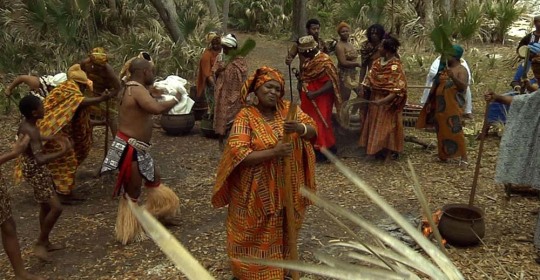
New Names Old Gods: A look at Seeking Rituals in Pentecostal and Gullah Religions
The Case for Structural Ritual Transcendence
Religious rituals and cultural traditions are often not isolated practices. In that I mean, most religious traditions can find root in various cultural and societal practices. In some cases, entire rituals can be survivals from other religions, or blended expressions of culture, tradition, faith, etc. One example of these, are African-American religious traditions. These religious traditions are often described as blended faiths, exhibiting intersectionality between tradition, culture, and religion. Many religious practices in the African-American community are a bricolage of various cultural and religious intersections; a kind of hybrid. Evidence of such can be found in Christian, Islamic, and even Judaist traditions.
In terms of Christianity, most scholars have often pointed to the antebellum south and African slaves as significant evidence of some hybrid practices we see today. This paper does, however, suggest that the antebellum south and slavery gave way for the development of new religious traditions and practices via a blending of Africanisms from slave culture and theological premises taught them from various missionaries visiting slave plantations. This in many ways created new blended religious traditions, of which portions can be seen today. While this paper focuses on the blended Christian practices that extend from this time, there is evidence of other traditions that can in some way find lineage among African-American Slaves. However, we are often limited on an anthropological level to substantiate clearly, and or determine precisely, such progressions and development of that religious history.
Some often struggle to trace a progression from invisible slave institutions like Hush Arbors to visible institutions like Praise Houses, then to the modern African church. However, through analysis of rituals, in particular, the seeking ritual, we can show a historic connection between African-American Slave traditions and modern African-American Christian tradition (IE. The Pentecostal African Church). While the African-American Pentecostal Church and Slave Religious Traditions, such of those of the Gullah People, may differ theologically, there remain rituals among the two that prove a connected history and a structural ritual transcendence. By structural ritual transcendence, I coin the phrase to suggest that there maintains a structural and functional continuity in the performance of like rituals that are, nevertheless, interpreted in significantly different ways. Even if the religious traditions being examined are completely different. To further that point, I present information that suggests that rituals entirely transcend theological premise and can maintain such function.
We will see this among the Gullah Tradition that extended from the seas-islands of the Carolinas and The African-American Pentecostal Church, which at times may be referred to as the African Church. While the African Church and the Gullah Tradition share a common ancestral history, being that most congregants are decedents of former slaves, there are clear theological differences. Despite having no direct lineage, the presence of the seeking ritual in both traditions speaks to a connected history. The seeking ritual in both religious traditions is structurally and functionally similar; and for both traditions, seeking is a rite of passage into a church or community. The ritual involves communication with the divine, validation by a spiritual leader, and testimonial-given by the individual in the ritual. The seeker is separated from the community sent on this seeking ritual then returns to the community for approval.
While this paper does not focus entirely on theological differences, it aims to emphasize the connected history of both traditions as a way to show the origin of the seeking ritual itself. While the ritual survived, the same theological basis of the ritual did not. Thus proving, that rituals can maintain structural continuity regardless of theological convictions. This paper will review and analyze a ritual from both slave traditions and the modern Pentecostal African church. Through reviewing this ritual, we can in some way substantiate two claims. First, that there is a connection between slave traditions and the African church. Secondly, that rituals can transcend theology and maintain similarities both structurally and functionally. Throughout the paper, we will further these points utilizing Arnold Vann Gennep and Victor Turner who provide a theoretical lens in the discussion of rites of passage and more broadly the pre-liminal, liminal, and post-liminal stages of such rituals.
Gullah and Pentecostalism
This paper examines such ritual and or Rite a passage into the Praise House known as “seeking”. We also examine this ritual as presented in the African Church particularly the Pentecostal denominations. As previously articulated, this paper will show a connection between the Gullah faith and Pentecostal church through the category of rituals and through the theoretical lens of liminality, rites of passage, and functionalism. While doing this, we show the link between the Pentecostal church and Gullah Religion. In particular, utilizing the House of God Church, Church of the living. While most present a connected history between the African Church and slave traditions hinged on ancestral and cultural bounds. By showing the seeking ritual as being structured the same and functioning similarly, one can validate a further connection that previously is not entirely accepted.
The Gullah People are slave population or the descended of slaves that were brought to America from various parts of Africa mainly from Angola and Sierra Leone. The Gullah people were brought to be slaves on rice plantations in the low-country of South Carolina, North Carolina, and the parts of Georgie. These rice plantations were entirely on sea-islands which were distant from the mainland. This unique characteristic gave the Gullah slaves a limited freedom that becomes a microcosm for various institutions. One of which being the Praise House. Slaves often met for various purpose in the antebellum south. These meetings were done in secret as to not alert plantation owners of their gathering. These meetings become a silent institution known as Hush Arbors. The Hush Arbors to the Gullah morphed into a visible institution known as Praise Houses. The limited supervision from overseers on the sea-islands provide the slaves to meet together and thus form institutions with religious and social impact.
While Hush Arbors were a silent institution for social organization and organizing, some slaves were able to have more public means of gathering and even self-governing. In the Sea Islands of the Carolinas and Georgie, Praise Houses became a cornerstone of life on the plantation. In these parts, the Gullah People were slaves who lived on plantation Sea Islands separate from the mainland. While yet slaves, the Gullah People experienced less observation and even given the opportunity to worship and gather in such Praise Houses. These churches became to function as not only the center of religious life but also a social and judicial hub. Praise Houses were used to create social rules and enforce these rules when disputes arose. It is here, in the Praise Houses, you see the birth of the Gullah Religions, which blended Christianity and Africanism, often to create newfound faiths and various new traditions. Praise Houses were essential to life and thus admission into such was in a way admission into full integration into Gullah traditions. The same can be found in churches today; particularly the House of God Church-Keith Dominion.
The House of God, Church of the Living God, The Pillar and Ground of the Truth Inc. was founded in 1903 by Bishop Mary Magdalena-Lewis Tate. She is noted as being the first African-American Bishop in the world. This particular organization was founded in Nashville, TN with various dioceses (jurisdictions) in numerous parts of the country; even including Rochester, NY. This church is one of the earliest African-American Pentecostal churches and also has deep roots of origin in the south. However, to both the Gullah and the African-American Pentecostals seeking is vital to each of the religions. We will examine the theological premises in subsequent sections, however, it is important to note the structural and functional similarities of both seeking rituals.
Structural Ritual Transcendence While both rituals differ ideologically, the functionality of the two are the same. Both rituals serve as rites of passage. In the House of God Church, like most services similar to the Gullah Tradition in Praise House, include huge levels of charisma and energetic liturgy. Sermons tend to be very spiritual and speak to the coming of Christ like many mainstream Christian denominations. The tenets of the Pentecostal church are fundamentally the same as other Christian denominations, but differs in the sense that Salvation is through the acceptance of Christ and the endowing the Holy Spirit. In order to be a part of the church or the body of Christ, you have to be full of the Holy Ghost and produce certain signs like Speaking in Tongues, Shouting, etc. For some Pentecostal churches this rite of passage, is done through prayer with various degrees and styles. Due to the charismatic nature of the Pentecostal Church, this ritual is done with extended periods of prayer, trances like conditions, communication with the divine, visions, etc. This is similar to the Gullah, in that, admission into the Praise House was not inherent through attendance, one must go through the seeking ritual. To this end we can look at the rituals in light of Arnold Vann Gennep and Victor Turner.
Arnold Van Gennep suggests rites of passage as having three main phases in its structure. Separation (Pre-liminal), Transition (Liminal), and Incorporation (Post-Liminal) respectively. For the Seeking tradition the Pre-Liminal and the Post-Liminal are socking similar. The liminal stage given its nature presents a difficulty to see overarching trends as in each ritual the experience is based heavily on individual experience. Victor Turner recapitulates the nuances of liminality in his writings. For Victor Turner, the Liminal stage is a phase where the person is “betwixt and between”. Victor writes,
“The attributes of liminality or of liminal personae (“threshold people”) are necessarily ambiguous, singe this condition and these persons elude or slip through the network of classifications that normally locate states and positions in cultural space… As such, their ambiguous and indeterminate attributes are expressed by a rich variety of symbols in the many societies that ritualize social and cultural transitions. Thus, liminality is frequently likened to death, to. being in the womb, to invisibility, to darkness, to bisexuality, to the wilderness, and to an eclipse of the sun or moon.”
The Pre-Liminal stages of seeking both derive from to be included in a community. For the Gullah, the seeking ritual was blended from early Methodist in the slave quarters (hush-arbors) asking African slaves if they would “seek” Jesus after hearing sermons. This in time blended with Africanism that created a process required for admission into the Praise Houses. In the Pre-Liminal stage of seeking to Gullah, they are sent into the wilderness and physically separated from the community and guided in part by a “spiritual parent”. This is also evident in the Pentecostal African Church. Where by a person looking to join the church would have to come to an altar and be guided by the clergyperson to begin the seeking. Coming to the altar or being sent to the wilderness show a separation and even a belief that one most go to a particular place for the ritual to work; axis mundi.
The Liminal stage of seeking is this important and in the Pentecostal church and the Gullah tradition it is heavily important. In actuality, while liminal stage is experienced difference between the Gullah and Pentecostal church is has the same function and even substantiate Victor Turners view of the liminal stage. What occurs in the liminal stage to the seeker determines admission into the community. The Post-Liminal stage in contingent on the experience and even communal validation of the liminal stage. In the Gullah Tradition, the seeker experiences various stages of interaction with the divine and ancestors. Communication with Ancestors is a vital component, as the ancestors are consider guides to the seeker. They the seeker through personal development and conviction. This can be considered similar to processes of repentance for the seeking ritual in the Pentecostal African Church. In the liminal stages, the seeker in the African church also has this communication with the divine and in this individualistic manner goes through repentance and spiritual conviction. The seeker is expected to be “godly sorry” for their sin and after this repentance one can be empowered with the Holy Spirit. Both the Gullah and African Church share this structural essence of spiritual nuance. For the Gullah people, the liminal stage is the wilderness and the for the Pentecostals the Liminal stage is being “born-again” through seeking for the Holy Spirit on the altar. Such symbols are articulate as clear liminal imagery according to Victor Turner.
The Post-Liminal Stage of Incorporation is key. In this part with see distinct similarity between the Gullah and the Pentecostal African Church. Particularly, in terms of communal validation and acceptance. During the liminal process the seeker is physically disconnected from the certain parts of their community. In the Gullah this is being sent to the Wilderness and in the African Church this is coming to the Altar. In the Post-Liminal when the seeking is incorporated into the community we see the requirement of communal validation. In the Gullah, the seeker has to stand before the elders of the Praise House and describe what occurred and what message was told them from the ancestors or God. This has to be approved by the Elders as a genuine experience and one may even be asked question as to ascertain such validity. This is exactly duplicated in the Pentecostal African Church. After the clergy has observed certain “signs” the seeker has gone through the proper processes. The seeker is picked up from the Altar placed in front of the church to “testify” as to what occurred. The elders of the church listen and to validate that the seeker has received the Holy Spirit. In both instances of the Gullah and Pentecostal Church, going through seeking ritual is not enough. The Communal Validation is unique structural component particularly in a church environment. For a church to use terminology of seeking, to use the ritual functionality as a rite of passage, and to include structural component unique to the Gullah Tradition, overwhelmingly validates a claim that both tradition extend from a connected history.
Furthermore, the in each ritual the theological premise is fundamentally different. The Gullah place huge importance on communication with ancestors and placement of ritual in the wilderness. While theologically, Pentecostals place huge importance on personal repentance and receiving of the Holy Spirit. Even the role of Ritual is slightly different on a theological term. While both use the seeking ritual as rite of passage and forms of admission. To not go through the ritual to the Gullahs means no admission into the Praise House and thus the community. However, to not go through seeking in the Pentecostal Church would mean one has not obtained the Holy Spirit and thus will not enter Heaven. It is a matter of salvation to the Pentecostal that is not entirely, if at all, evident in the Gullah Tradition. The evidence in this paper exhibit clear that rituals in fact can transcend theology and maintain a structural and even functional continuity.
The Seeking Practice to the Gullah
��Seeking is an essential part of Gullah traditions and particularly the Praise House. The role of this ritual serves as rite of passage and functions as the tool for admission into the Praise House and ultimately the Gullah Community. It is important to note that the spiritual aspect of Seeking presents some difference of experience interns of what the ritual means to every person. However, this notation is no different than any other religion. For many religions, iconography or symbols can mean a host of things for people. Yet, if one should analyze the seeking ritual in terms of Victor Turner or Arnold Vann Gennep you can see a structural continuity both in the Gullah traditions and in the Pentecostal church.
Seeking in the slave religion of Gullah was ritual that proceeded full-emersion baptism which is another key to admission into community. Seeking symbolized the death of the old person and the birth of a new person. The origins and the nomenclature of seeking actually came from Methodist ministers who after preaching would ask slaves if there were anyone who would “seek Jesus”. However, over time this ritual began to blend with Africanism to create the Gullah Seeking tradition. The ritual was a solitary and individualistic ritual into the wilderness that was led by a spiritual leader called a “Spiritual Parent”. The ritual included prolonged prayer and meditation. During this process, the seeker would go into a trance and speak with natural objects, ancestors, and God. Often these are done via dreams and other visions. The seekers would then have to return to the community and give an account of what happened. This would have to then be reviewed by the elders of the community and be confirmed as a genuine spiritual experience. The ritual involves much ideology and activity related to ancestors and being spiritually guided. This is depended not on a ritualistic format but speaks greatly to the liminality Victor Turner speaks of.
What is very interesting is the theological premise of the ritual. While simplistic in structure you see a unique paralleled in Pentecostal in the way the ritual happens. Essentially, the ritual is about a seeker that goes on a trip into the wilderness, has a dream, comes back, tells that dream, and if the elders agree the seeker, is accepted. However, the theological culture aspects of this ritual provide resemblance of seeking in the Pentecostal churches. For the Gullah People, being blended provides the language of Christianity but the belief of survivals from African religions; or with no real basis at all. By that I mean, they maintained the language of Christianity but associated them with things other than typical Christian thought. Jesus could have been God but also If asked who Jesus was it could have been a slave master or plantation worker.
The Seeking Practice to the House of God There are numerous comparisons among the Pentecostal experience of seeking and the Gullah Faith traditions. It is important to note that this ritual can be called various things in the Pentecostal church i.e. tarrying, seeking for the Holy Ghost, Laboring at the Altar, or simply praying. However, I utilize The House of God Church — Keith Dominion as our case study for various reasons. First, there is no direct link between the Gullah Tradition and this particular church. This is important because it eliminates any rebuttal which might suggest that the reason the seeking ritual has survived is due to a direct link. The House of God Church, Church of the Living, was founded in 1903 by an African-American woman in Greenville, Alabama and Nashville, Tennessee. The Gullah Tradition, while certainly significant to African-American, we see no real influence wide spread. We see connectivity to Africanism present in slave populations and persons of African descent. Therefore, while I am not asserting that the Pentecostal Church derives from the Gullah Faith, I am suggesting that both the Gullah faith and the African-American Pentecostal Church extend from a complex process of slave trying to grapple with Christianity and some survivals from African culture.
Secondly, I use The House of God Church Inc. — Keith Dominion because it is a mainstream denomination that uses similar nomenclature and ritualistic structure of the Gullah People. Terms like seeking, seekers, vison, are used in explaining the ritual theologically. And the ritual’s structure mirrors- in many ways- the Gullah practice. While, our paper does not provide scholarship toward just what both the Pentecostal and Gullah church extend from, our paper does capitulate an argument that ritual can transcend theology and maintain its structure.
The Seeking Tradition in the House of God Church is structurally similar because it focus on a few aspects similar to the Gullah Tradition. The “preacher” serving a dual role as a “spiritual parent” and “Elder” like in the Gullah Tradition. The individualistic characteristic of the process. The experience of the seekers in both tradition including a communication with the divine, and visionary experiences. Also, the affirmation aspect of the seeking process which provides admission into the church or community is duplicated in both traditions. The setting of the seeking process is important to note. In most services, after the preaching, the Elder or Clergyperson of the church would do what is called an “Altar Call”. Two types of things can happen during this time. One, a person can simply go up for individual prayer or for corporate prayer. However, if one desires to be filled with the Holy Spirit the clergyperson would begin the seeking ritual. This is important because one must note that the seeking practice in the Pentecostal Church is not just a general prayer. It is initiated under special conditions like in the Gullah Tradition. Also, like in the Gullah Tradition, the Preacher at the beginning of the seeking tradition become a spiritual parent. While observing this ritual at a local parish of the House of God Church Inc., The preacher acting a coach and guide began to instruct the seeker to close their eyes, focus on Jesus, picture him on the cross. They are often instructed to get in a praying position and begin to “seek” the lord and cry out to him, confessing their sins. When asked many seekers experience seeing Jesus and having dialogue with him. In this trance state, you see many parallels to the Gullah People which experience seeing ancestors, angels, and various persons. In fact, these vision have a principle of guiding the seekers; the same is evident in this Pentecostal Tradition. During, this time the preacher is also singing and clapping. Other who have already gone through the process and are members of the church create a circle around the seeker and begin to clap and sing spiritual songs, hymns, etc. The theological premise to this is that the strong of the church should support this seeker and also stand as a physical shield against spirits (the devil) that will come to distract the seeker while he/she is seeking the lord. The preacher watching attentively at the movement of the seeker and the sincerity of the seeker would then instruct the seeker to begin “calling” on the name of Jesus. During this process of seeking, it is called tarrying (calling on the name of Jesus), this is done by saying the names Jesus repeatedly. This is said to keep your mind focused on Jesus.
After the seeker has gone through the process of seeking, and certain actions has occurred like dancing, or speaking in tongues, or personal affirmation. The seeker is then picked up off the altar or if stand is escorted to the front bench of the church or a chair by the preacher. At this point, the preacher ask the seeker certain questions as to ascertain if the Seeker had been truly filled with the Holy Spirit. They would ask things like “How do you feel?”; “What happened to you at the altar?”; “Do you believe God touched you tonight?”. This is very similar to the structure of the Gullah Tradition, where testimony is given before the Praise House and questions asked to confirm if the seeker had in fact been through the process successfully. The same happens in the Pentecostal church, while the seeker is talking, the preacher listens and makes suggestions as to if the seeker should return to the altar the next time or if this is sufficient. If the seeker has proven to be filled with the Gift of the Holy Spirit the church rejoices, like in the Gullah Tradition, and extends the “Right Hand of Fellowship”. In the Pentecostal church, one often cannot hold any church position unless that are filled if the Holy Spirit and thus they would have had to go through some sort of seeking process.
A Connected History
For much of the history of African people America, the “African Church” has played a pivotal role in their history. Insomuch, that the “African Church” worked as epicenters of religious, social, and communal activity. In the height of the civil rights movement and even in Post-Antebellum America the African Church was often used as a location for organizing meetings and gathering support for various social justice activities. In many instances, Pastors and African-American preachers used the pulpit as an unfiltered platform to oppose racism and oppressive policies in the country. The institutionalized African church, also provided an opportunity where by which African-Americans could theorize and form new theological belief that centered around a God who would one day liberate them from their oppression. Organizations like the National Baptist Association, The African Methodist Episcopal Church, The African Methodist Episcopal Zion Church, The House of God-Church of the Living God, are examples of these institutions.
While, the Affrican Church various ways extends from old slave institutions like Hush Arbors and Praise House, it is important to note, that in no way am I suggesting a social morality exclusive to the Christian faith. However, it is heavily documented the theological persuasion of many slave being rooted in Christianity. Thus, the Hush Arbors and Praise houses of the Sea Islands in the Carolinas are examples of institutions that held greater significance in the community. While these institutions served as religious bodies they also functioned as hubs into the greater scheme of community. Thus admission into these institutions served as admission into the wider community. Such can be exhibited in the African-American Church. Rituals like “seeking” serve a dual function of being both a religious and societal rite of passage. While there is no clear line to show historical progression anthropologically through examining the rituals of each religion we are able to show a historical connection. The Structural Ritual Transcendence of seeking further validates the second argument of this paper; that of connection between two distinct religious traditions.
141 notes
·
View notes
Photo

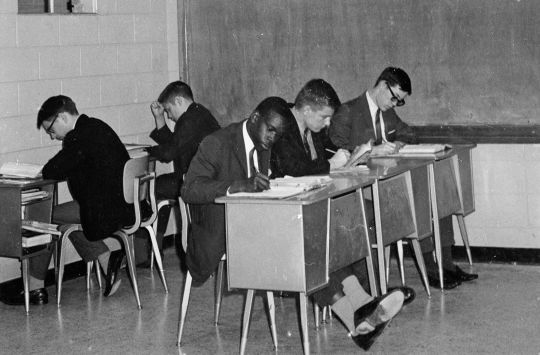
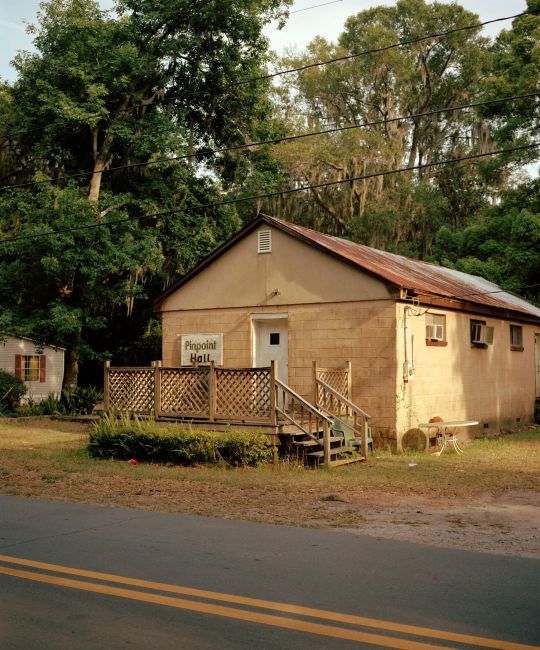
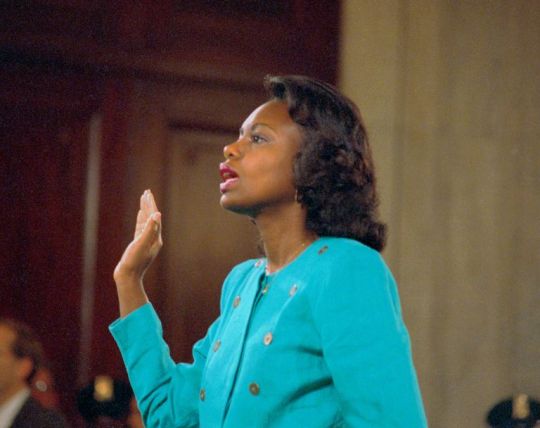

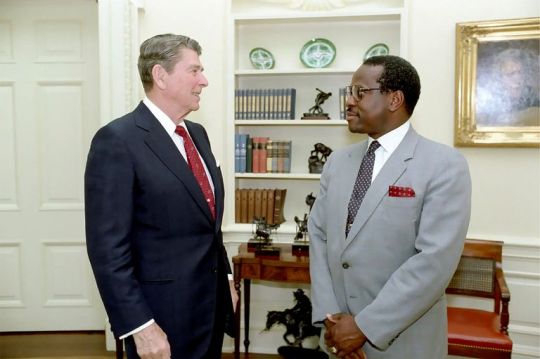
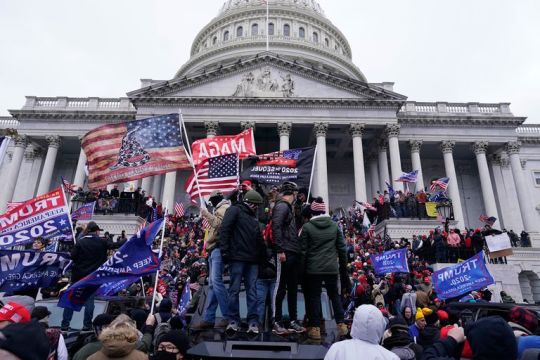
Looking for Clarence Thomas
He grew up speaking a language of the enslaved on the shores of Pin Point, Georgia. He would become the most powerful Black man in America, using the astonishing power vested in a Supreme Court justice to hold back his own people. Now he sits atop an activist right-wing court poised to undo the progressivism of the past century. What happened?
Story by Mitchell S. Jackson. Photographs By Ike EdeaniPUBLISHED: AUG 8, 2022
Gullah translation by Alphonso Brown, owner of Gullah Tours in Charleston, South Carolina; gullahtours.com.
They would call him Boy. Deb bin call um Boye.
Boy was born in low country on a one-dirt-road-in, one-dirt-road-out patch of mainland just an eleven-mile jaunt from Savannah, Georgia: Pin Point. Boye bin bohn een de loh kuntri on uh one dutt roh’d een uh one dutt roh’d out patch ob de may’n land jess uh leh’bin my’l fum Suhwannuh, Gorgee: Pin Py’nt.
Boy born on a humid, big-moon night in a shanty near the salt marsh. ’E bin bohn on uh hot big-moo’n night een uh shant’ ner’ry de salt masch. Born in a home with a single room of electricity, no running water or inside toilet. Dah boy bohn een uh hoow’s wid dis one room uh lec’trik. Boy coaxed from his mother’s womb by a midwife from another part of Chatham County, and per his mother’s mythology, Boy was too stubborn to cry. Boye slip fum ’e mama to uh midwi’f wha’ lib een uh pah’t ob Chat’um Cun’ty, ’n ’codd’n tuh ’e mah, ’e bin too stubb’n fuh mek wah’tuh come fum ’e yeye. Outside the ramshackle abode where Boy was born: the constant chorus of Moon River; birds rustling the branches of the live oaks and pines; possums, deer, raccoons darting through the woods. Outdoh de mix-up shanti weh Boye bin bohn: de repeet’n music of Moon Ribbuh; de buh’d dem shuff’lin shru de bran’ch ob de ly’b oak ’n pine; poss’um, day’uh, ’koon, dash’n shru de wood. Yonder, the seafood factory, run by the paternalistic boss of almost everybody around—including Boy’s mother and including, for a time, Boy’s soon-to-be-absent father. Ohbuh yonduh, de se’food fat’ry, wha’ run by de ol’ boss ob ’most ebbybohdy ’round yah—’kloo’d Boye mudduh ’n ’kloo’d, fuh uh little time, Boye soon fuh be ab’sent fadduh.
Boy was born the night of a wedding at the community church, Sweet Field of Eden Baptist Church, the worshipping hub once known as Hinder Me Not, a name conceived as an attestation: We will endure. Boye bin bohn de night ob uh weed’s at de town chutch, Sweet Fe’l ob Eden Baptist Chutch, de wer’shup wha’ kno’ as Hinder Me Not, uh nay’m mek up as a ’testation: We gwoi ’dure.
The moonlit night of Boy’s birth, several of his people celebrated the new union in Pinpoint Hall with drink and food and dancing. De moonlight ob Boye bir’t, sum’ ob ’e pe’pull cel’brayt de new knu’un en Pin Py’nt Hall wid drink ’n supp’n eat ’n dan’cyn.
Unbeknownst, as those denizens drank and ate and danced, they also honored the arrival of a newborn who’d go further than any of them. Unb’knownst, as dem pe’pull drink ’n grease ’e ’mout ’n dance, day also on’uh de comin’ of uh newbohn who go fer’duh dan enny ob dem.
Boy grew. Boye gro’ up.
His skin darkened to the hue of the woods at night. ’E skin duh dahk to de culluh ob de wood at night. His lips grew full. ’E lip duh full. His forehead and nose spread broad. ’E fore head ’n nose stay broh’d. His eyes set far apart. ’E yeye sit faah pah’t.
Became the features Boy would not love. Come de few’chuh Boye ain’ gwoi like.
The features of his people: the Gullah/Geechee. De look ob ’e pe’pull: de Gullah/Geechee.
Boy’s people—the Gullah/Geechee—descended from the West Africans captured and enslaved on the Sea Islands and in the low country of Florida, South Carolina, Georgia, a people who worked crops of cotton, rice, indigo. Boye pe’pull—de Gullah/Geechee—come fum de West African wha’ tek way ’n mek slave on de Sea Island ’n de loh kuntri ob Fler’duh, Sout’ Kuh’lina, Gorgee, uh pe’pull wha’ wuk fe’l ob cut’n, rice, indigo.
As freedmen and -women, those industrious folks founded Pin Point in 1896. When den bin free man ’n um’mun, dem haa’d wuk pe’pull find Pin Py’nt een 1896. Worked the land and the river. Wuk de lan’ ’n de ribbuh. Rooted themselves. Plant demself.
Boy not only bore the visage of his people but spoke their language: Gullah. Boye not only carry de fay’s ob ’e pe’pull but tawk the tongue: Gullah.
A native tongue that would shame Boy for years to come. Uh nay’tub tongue daht Boye bin sha’em fuh long time uh come.
During Boy’s less-shamed Gullah-speaking boyhood in Pin Point, he frolicked barefoot and shirtless in the fenced-in yard with his older sister and younger brother. Do’rn Boye less-shame Gullah-tawk’n boyhood een Pin Py’nt, ’e play ’round bayf’t ’n noshirt een de fence-up yaah’d wid ’e old’duh sistuh ’n young’uh brudduh.He skipped oyster shells on the river’s high tide, shot green chinaberries out of a gunlike toy called a pluffer, fished creeks for minnows, hunted the sandy marshes for fiddler crabs. ’E skip’ os’tuh shell on duh ribbuh high ty’d, shoot green chay’uh berry out ob gun-lookin’ toy call’ a pluffuh, fish krik fuh minnuh, hunt on de sand’ masch fuh de fid’la crab. Boy grew sturdy on crabs and rice, oysters and rice, butter beans and rice, shrimp and grits, stewed crab, fried crab, chitterlings, pigs’ feet, rabbit, possum, coon. Boye gro’ up skrong on de crab ’n rice, os’tuh ’n rice, de butt’uh be’n rice, skrimp ’n grits, by’l crab, fry crab, chit’lyn, pig foot, rabbit, poss’um, ’koon.
Boy, a dark, Gullah/Geechee, Gullah-tongued incipient scholar, happy-footed a long dirt road with his sister to catch the bus that would carry him to the Haven Home School, his first taste of formal learning. Boye, uh dahk, Gullah/Geechee, Gullah-tongue who ste’dy ’e head plen’ny uh time, happy-foot ’long a dutt roh’d wid ’e sistuh to fuh catch de bus wha’ carry ’em to de Hay’bn Home School, ’e fun’ taste ob straight learnin’.
One day, returning from Haven, Boy witnessed a sight that set his life on another path, that would impact the lives of untold others. One day comin’ fum Hay’bn, Boye yeye tie up on sup’in dat set ’e life on uhnudduh paah’t, dat would change de life ob untold udduhs. The tiny home where he’d been born was—the result of his little brother and a cousin playing with matches—a smoldering heap of ashes and singed tin. De little shanti weh ’e bin bohn ’n bin—de ’cause ob ’e little brudduh ’n cousin dem playin’ wid mat’che—uh smol’dren stack ob ash’ ’n sin’jup tin.
Boy’s mother moved him and his brother with her to Savannah, Boy’s forevermore goodbye to full-time living in Pin Point. Boye mama moo’b ’em ’n ’e brudduh wid she to Suhwannah, Boye fohebbuhmoh goodbye to full-time libb’n en Pin Py’nt.
He wasn’t the first Supreme Court justice to speak a native tongue other than English. Felix Frankfurter, appointed to the court by Franklin Roosevelt, was an Austrian Jew born into a long line of rabbis and spoke no English when, at age twelve, he Ellis Islanded into New York City with his family.
There’s no mention in the historical record as to whether Frankfurter hated himself for growing up speaking German, or whether the experience had so scarred him in childhood that he spent the rest of his days training his tongue to erase his past and his people.
But no other member of the high court grew up speaking a language at risk of being forgotten like Clarence Thomas did—the Gullah/Geechee man they once called Boy (the genesis of those Pin Point nicknames, and why his was Boy, is beyond anyone’s memory), who decades later would write what may be the most important thing there is to know about him: “You hate yourself for being part of a group that’s gotten the hell kicked out of them.”
You want to understand Clarence Thomas? That sentence is the Rosetta stone. Hatred directed not outward but inward, where it does the oppressor’s work for him. The man’s a human being, so his self-hatred couldn’t have been a conscious choice. But be that as it may, my concern for a single suffering human ain’t the purpose of this writing. My purpose is to try to understand Clarence Thomas not because of what the world did to him but because of what he’s doing to us.
We are on the precipice.
If you are Black if you are brown if you are Asian if you are Middle Eastern; if you’re a woman, disabled, gay, trans, nonbinary; if you are poor, a Muslim, a liberal; a returning citizen or the wrong kind of immigrant; or if you consider yourself some intersection of any of those identities, you are standing at the edge of the Grand Canyon with one foot slipped off the ledge, the other foot planted on hella loose gravel, a strong wind gusting up behind you.
We are as disunited as a country defined (or so they say) by its union can be, are a shaky democracy cleaved into camps, each living in its own alternate reality, and our ability to endure is very much in doubt. And at just such a moment of upheaval, Clarence Thomas, who for thirty years was a radical outlier on the court of courts, has won. He and his almost unfathomable view of what is just and what ain’t have prevailed. His time has arrived.
Which is to say, as much as anyone, Clarence Thomas, the most powerful Black man in America, has ushered us to this grave place.
The question is: How—and how could he?
The question is: Why?
The question is: What then is Clarence Thomas to this Black man?
To that, the man himself may well say, “Black man, all you see is race. You’ll never get anywhere that way.”
Nah. All America has ever seen is race. To pretend otherwise is to deny the truth of your and my life. Ain’t no amount of Federalist Society cant or jurisprudence dressed up in novel and abstruse legal theories or self-serving advice cautioning Black people to cease talking about race is gone change that. How can we stop talking? It boggles my mind that you fetishize a document that held in its original form that women were not and wouldn’t ever be citizens, that your/our people were not and wouldn’t ever be humans.
Like you can’t see that there were many things that document held to be true that were not true, many things that the framers, no few of them our enslavers, got incontrovertibly, manifestly wrong. Like in your “textualist” or “originalist” or “natural law”—or whatever term you apply to give a good account of your work—reading of it, you failed to divine that one of their main intents was for no Black person to set foot in a courthouse less it be in chains. Come the fuck on; that document in its best, most pristine, unblemished, unamended form is a Greatest Hits, circa 1788.
Ain’t that when they had us, Clarence? Ain’t that where they want us?
Easy for you to say, make it on your own, stop talking about race. Did you make it on your own? And of the things that fill that prodigious mind of yours, name one larger than race, Black man. I dare you.
My god, dude, what the hell happened to you?
Thomas and I are two generations apart, but I’ve been seeing versions of him all my life: dudes who never code-switch from extra-extra proper, who favor the Ivy League look and business casual, who bad-mouth Black culture like it’s a nine-to-five and exalt anything with European roots. These are often dudes who’ve been deemed exceptional, plucked up to receive elite educations, and in that Talented Tenth proximity to whiteness favor white friendships, choose a white partner.
Thomas is familiar to me in particular because, in the story of his grandfather—the man he called Daddy and who raised him and molded him—I see my great-grandfather, a fellow bootstrapping southerner. Because in Thomas’s determination to King’s English his way to respectability, I can hear my grandfather, chiding me to use “isn’t,not ain’t.” Familiar because I, too, carry the primal wound of a boy whose biological father deserted him.
But he’s also alien.
Foreign because we’ve never seen a Black man this powerful this bent on harming other Black folks. He’s alien to me because I love my people and I can see in his hardened heart he’s against us.
The question is: How—and how could he be?
The question is: Why?
The answers I’ve discovered source back to a place so small you can’t even call it a town.
“He was born right over there.”
John Henry Haynes, age of eighty-three, points a bony finger toward a ragged copse.
He peeps my raised eyebrows and doubles down, louder: “Right over there!” He tells me that was the night of the wedding—Haynes’s first cousin, Virginia, over at Sweet Field of Eden. They had a reception down the road at Pinpoint Hall—not the cinder-block building it is today, no. Back then it was wood. “They didn’t have regular paint, so they would mix limestone and water. That was the paint,” he says. Some men built a wooden arch, and the women decorated it with Spanish moss and crepe-paper roses.
“They didn’t have no band.”
There weren’t many houses then. “Nothing was here when he was born,” says Haynes. “We had a path that come through here, go from up the street to down the street. See ’cause that side of Pin Point is higher land, and this side slopes down. So that’s Up-the-street, and that’s Down-the-street,” he says, gesturing.
Go figure, everybody had a nickname growing up in Pin Point then. Haynes’s handle was Pig. Pig remembers that in the weeks and months after Pigeon had Clarence—Pigeon was what everybody called Leola Williams, Clarence’s mother—the older kids would run in and look at him cooing or sleeping. If Pigeon asked them to, they would pull a thin curtain from a window and drape it over his crib just so, to keep the flies and mosquitoes off.
There were no diapers—no one had the scratch for such opulence. Instead, they tore up sheets, washed and reused them. The moody Spanish moss hanging from the trees—their toilet paper. There were two water pumps—one on the slab down at the crab-picking factory, one over at the edge of Miss Harriet’s property.
“It was some hard times,” Pig says. “You had to be disciplined. In those days, you couldn’t walk by a person’s house and not say, Good morning, good evening. Yes sir, yes ma’am. You walk by them and you don’t say nothing? ‘What’s wrong with your mouth, boy?’ We were seeking the Lord, man. I was baptized in this creek right here.”
At high tide, Clarence and the younger boys would skip oyster shells across the surface of the water.
“We made our own toys,” Pig says. “We made scooters.” He retrieves a Bic pen and some white paper from the glove box of his truck, sets the paper on the hood, and starts drawing—precise, old-man drawing with straight lines. “We had these gallon cans, like a paint can, from the oysters. You take the tops of the cans, those your wheels . . . . We put a nail here, right there . . . . Put a string right there, okay, right there . . . . We cut another board . . . .” His aged hands pull the pen across the paper, and a scooter is taking shape. “Then that’s the string there. You wanna nail this down tight . . . . Okay? You take half of this, half of that, and put it there—see, this is the bottom . . . . Then you just get on, and you push it!”
He straightens and looks at his drawing. “We made a lot of these.”
Hard times, yes, but good times, too, if you didn’t know no better. “We raised up on oysters and crab,” Pig says. “We was blessed. We didn’t know how rich we was, man. Going to school, kids would call us crab pickers. ‘Here come the crab pickers.’ But we had a good life here, man. A good life.”
Pig was working for a roofing company in the early 1990s, forty years after Boy moved away. “When I came back off a break, it was change-of-shift time,” Pig says. “Guy named Herbert Sanders, out of Rincon, Georgia, he come running and said, ‘John Henry! Your homeboy’s appointed to a judge, man!’ I said, ‘Who?’ ‘Clarence!’ I said, ‘What?’ He said, ‘Yeah!’ I went home and seen it on the news. Mm-hmm.”
If he saw Clarence today, I ask, would they hug, would they catch up?
“You can’t get near him,” Pig says.
Thomas writes in his memoir of a life-changing moment at one of the Catholic schools he attended: “Father Coleman told me matter-of-factly that I didn’t speak standard English and that I would have to learn how to talk properly if I didn’t want to be thought ‘inferior.’ ”
Can you imagine the curriculum of those fine parochial schools? What you think they taught young Clarence about the Civil War? What are the chances they educated him on the Gullah/Geechees’ rich West African heritage? How many stories about Black life do you think they assigned? What color was the savior that hung in his chapel?
James Baldwin wrote, “A child cannot be taught by anyone whose demand, essentially, is that the child repudiate his experience, and all that gives him sustenance, and enter a limbo in which he will no longer be black, and in which he knows that he can never become white.”
The older Thomas got, the further and further he absconded from his Blackness. The more Thomas revealed his anti-Black sentiments, the more and more bigoted white people propelled him in his career.
The further and further he drifted into that limbo.
After dabbling in a couple of seminaries, Thomas gave up on the Catholicism of his upbringing, which got him damn near excommunicated from home. He attended the College of the Holy Cross, in Worcester, Massachusetts, starting in 1968—Father Brooks, who would soon become the head of the school, drove hundreds of miles in search of Black students to help diversify the campus. Thomas hung with Black Panthers and even helped start the Black Student Union, though he wrote later that he half-wished he hadn’t been a part of Black students’ cleaving from the rest of the student body. (“Did we really want to do to ourselves what whites had been doing to us?”)
He met Kathy Ambush, a coed from a nearby school, and they married the day after he graduated. Thomas’s grandmother, Aunt Tina, and his mother made the trip, but not Daddy. A few years later, he and Kathy had a child: Jamal Adeen. Thomas had chosen Yale from a trio of Ivy League law-school acceptances, a decision he swears to this day was a mistake off the belief, as evidenced by the lack of job offers on the other side, that people thought he got in only because he was Black. He ended up working for the Missouri attorney general, an old-money midwesterner named John Danforth, who—surprise—also went to Yale Law. He followed Danforth to Washington, D. C., when Danforth was elected to the United States Senate. In both roles, Thomas refused to work civil-rights issues.
Then, in 1980, he accepted a gig to speak at a conference for conservatives and met a young writer for The Washington Post, Juan Williams. Williams wrote about Thomas, and as lore has it, the story caught the eye of the new Reagan administration. President I-don’t-owe-Black-folks-nothin’-y’all-didn’t-help-me-get-elected offered Thomas a job: the Department of Education, but (joke was on us) working civil-rights issues. Thomas balked but took it, though it was short-lived because something bigger opened up: running the Equal Employment Opportunity Commission. That’s right, a government agency charged with combating workplace discrimination.
Over the next few years, he divorced Kathy and met the love of his life, Virginia “Ginni” Bess Lamp, at a conference on affirmative action. As EEOC chairman, Thomas did everything he could to nix the commission’s role in resolving class-action lawsuits against employers. Would you believe he refused to recognize mass discrimination, that he instead favored cases in which an individual claimed discrimination—person by person, that was all he was interested in. Fuck helping whole groups who had been targeted by prejudice. That’s not what government’s for.
Safe to say, the Republicans found their guy.
In 1990, George H. W. Bush made him a federal judge. Sixteen months later, he was standing on the lawn of the president’s Kennebunkport estate as Bush called him “the best qualified at this time” to succeed civil-rights icon Thurgood Marshall on the Supreme Court.
It was obvious to anybody with eyes and ears and a mustard seed of sense that Thomas had been chosen as a blunt instrument of Black oppression. Thomas could’ve been a Black hero, could’ve extended the legacy of the paragon he replaced, could’ve inspired generations of young Black kids to bend America’s arc toward justice. Instead, he’s taken it upon himself to forge a legacy from the negation of Marshall’s work.
A decades-old sedan sits curbside on a Pin Point street. It’s missing tires and caked over with so much dirt and grime that its windows are opaque. The car moves as if there’s someone inside it, but I ain’t about to stare. We huff through muddy grass past one manufactured home and mount the steps of another. We knock and wait, knock and wait, and nothing. All around us there’s the detritus of old things, furniture, household items, this-and-thats. Someone has turned a chicken coop into a kennel for a barking dog. We knock again, wait, wait, and when we don’t hear anything beyond the door, we decide to leave.
The man we’re hoping to talk to is kin to Thomas and a close childhood friend, still living in the old neighborhood.
To our luck, on the way back to the car, a truck pulls up with furniture and who knows what else. My editor tells the man that he came by the day before and that a woman told him to return. He asks if the man has a few minutes to chat about his old friend Clarence. The man pauses from hauling items off his truck and tilts his head at us.
“Nope, I don’t think I can do that for you,” he says.
“It would just be a few minutes,” my editor says. “We know you’re busy.”
The man, who is tall and wiry with salt-and-pepper stubble, grabs a chair off his truck and places it before him. “You know, people always coming around here asking about Clarence, wanting an interview about Clarence. And then they go off and do their thing and make money. Everybody else getting rich, and I’m still right here,” he says. “I’m still right here struggling. I like money. What’s in it for me?”
My editor and I shoot each other a glance. Who can blame the man for wanting compensation for his time? This scene leaves little to no doubt that he could use it. In fact, if you asked me to describe rural poverty, it would be something like this.
This is the poverty that Thomas left behind, that he escaped. And I can’t help but wonder how the world would look now if instead of this man hefting used furniture off his truck into his manufactured home, it was Thomas.
“We hear you,” I say. “We just want to get it right.”
“Gentlemen. I can’t be of service to you. I won’t be able to help you,” he says, and there’s a stern period in his voice.
My editor asks if the man needs help unloading the couch from his truck.
If you look back at Thomas’s life, almost every one of his achievements has been tainted by deep disappointment and/or hurt. From his early days in Catholic school, where he was shamed for speaking Gullah and looking African. To St. Pius X high school in Savannah—when the teacher wasn’t in the room, kids would call him ABC, “America’s Blackest Child.” To when he entered the seminary and the shock of his bigoted peers disaffected him into quitting his pursuit of the priesthood. He lost his grandfather Myers Anderson when he left the church, a man who saw over the horizon to a future he could not abide. “I’m finished helping you,” his grandfather told him. “You’ll probably end up like your no-good daddy or those other no-good Pin Point Negroes.” Thomas’s grandfather spited him for the rest of his days—which suggests something about how long Thomas might harbor a grudge over a disappointment or perceived wrong—and punished him for quitting the seminary and the life of service that would have kept him in Savannah and with his people, instead of highfalutin up north to school, learning the King’s English, and adopting a foreign system of beliefs. His grandfather made his disapproval clearer by skipping Thomas’s graduation from both Holy Cross and Yale, as well as his first wedding—a trio of hurts.
Thomas’s incredible gifts were always in service of something. He’s shared that he was excited about school from the get-go, back when he and his sister, Emma Mae, caught the bus to the Haven Home School in Pin Point, but if he was ever a textbook philomath or creative for the sake of being creative, that’s unclear. His intellectual gifts, from the time his grandfather enrolled him in private schools, were in service of making proud the most important person in his life—or, rather, not disappointing him—but soon and since, Thomas’s gifts have been used as a means of proving to white people that he could compete with them, that he could succeed by their standards, that he was worthy of their acceptance.
The most searing moment of Thomas’s public life—and the most notorious words that will ever come out of his mouth, more famous than any sage concurrence or dissent that will ever be attributed to him—came at almost the very minute that America and the world learned his name: the watershed of watersheds.
By 1991, Thomas was a professed conservative, one subject to concerns of whether he’d adopt a more complex view on the bench. At the time, he railed that Anita Hill’s sexual-harassment claims were a fiction, which was itself a backlash against his heterodoxy; that the hearings were a plot by liberal Democrats to defame him and keep him off the Supreme Court; that the scandal was yet another instance of the man working to keep a Black man in his place, even as he prepared to replace a Black man on the Supreme Court; that all of it was a crucible that amounted to “spiritual warfare.”
In his memoir, Thomas describes having an epiphany before testifying later that day in front of the judiciary committee. He is lying across a couch in the office of his mentor, Senator Danforth, with only Danforth and Ginni as company.
“The thoughts that had been running through my head for the past half hour crystallized into a single phrase.
“‘Jack,’ I said, ‘this is a high-tech lynching.’”
“‘If that’s what you think,’ he replied, ‘then say it.’”
Thomas goes on to describe entering the caucus room of the Senate building and delivering the following rebuke as if the Holy Ghost itself were speaking through him:
“This is a circus. It is a national disgrace. And from my standpoint, as a Black American, as far as I am concerned, it is a high-tech lynching for uppity Blacks who in any way deign to think for themselves, to do for themselves, to have different ideas, and it is a message that, unless you kowtow to an old order, this is what will happen to you,” he said. “You will be lynched, destroyed, caricatured by a committee of the U. S. Senate, rather than hung from a tree.”
Nevernohow does what happened to Thomas compare to Nat Turner hanging from a tree in 1831, to doctors flaying his corpse to make a coin purse or boiling the rest of him for grease. Never ever should what happened during the hearings be analogized to the fate of Mary Turner (no relation), who in 1918, for criticizing the lynching of her husband, was hung upside down from a tree, doused in motor oil and gas, and set ablaze; who, eight months pregnant, had her unborn baby sliced out of her belly and stomped to death; and who, after those odious tortures, was riddled to a quicker death by hundreds of bullets. It mustn’t slip your mind: Nobody murdered Thomas, shaved his head, and used his hair as part of the macabre stuffing of some southerner’s chair.
That, that, that is what it meant to be lynched.
“High-tech lynching” will be the most famous words Thomas ever utters in his life, words that opened him a gateway to this very point in time. And a sad paradox is that he workshopped those words with a powerful white scion. Matter fact, said it to Danforth as if the senator were at all capable of commiserating. He makes no note that his in-person audience was a Senate judiciary committee composed of fourteen white men. Not to mention he has described spending most of his life up to that point refusing any kind of preferential treatment on account of his Blackness, attacking the very affirmative-action-esque policies that propelled him at many junctures in his life.
For all his railing against those policies, for all his opposition to civil rights and to expanding rights for more and more Americans through a living Constitution, for all his “I’m a free Black man who wants to be judged on my merits alone,” in a moment of supreme crisis, Thomas played a Black card, a near unimpeachable tactic.
That was about the last Black card that Thomas played. With it he entered that nether realm where, as Baldwin describes, he was no longer Black but in which he could also not be white.
Been to D. C. umpteen times, but this is my first time visiting the Supreme Court. For hours I’ve wandered the grounds, harboring the wispy hope that I might see somebody Black or welcoming entering or leaving, that by some stroke of fortune I might meet a person who knows the strength of his handshake, who can confirm if his purported rapport with the people who work in the building goes both ways.
No such luck.
Instead I find the marble palace surrounded on all sides by an eight-foot black fence; find people jogging along First Street; three young women with access badges on lanyards laughing bright as the sky, a man posing a little boy in front of the fence for a photo, a Capitol police officer standing under an umbrella with a handheld electric fan angled at his face.
On another circuit around the grounds of the court and Capitol Building, I see a group passing the side of the Russell Senate Office Building, chanting, “Abort the court! Abort the court!” The ragtag group of seven looks weary—it’s so hot it seems the sun’s sole purpose is wringing sweat—which is understandable, but in truth they also appear defeated.
And none more so than the lone Black woman among them, slim with a nose ring and short Afro. She sits on the edge of a concrete wall and holds her signs for me: a small homemade one that reads "forced pregnancy is torture" and a printed placard that says "enough is enough: end gun violence." The Supreme Court is over her shoulder, just behind some maple trees. Not to mention, we’re right across the street from the building in which Anita Hill testified and Thomas denounced her as a bald-faced liar. The young woman and I do not speak a word to each other, but her signs and solemnity remind me, as if I need reminding, how Black women so often have suffered the brunt of Thomas’s decisions.
Here I’ve come to the place where the man does his work, a place he might be inside right now, and I couldn’t be more distant from him.
John Danforth shares a story about a time a few years ago when Thomas spoke at a luncheon of the Bar Association of Metropolitan St. Louis. In the midst of being hustled from the luncheon to the reception, he stopped to engage a janitor and, while U. S. marshals stood by and event handlers urged him to leave, kept right on chatting with her. “When you talk to Clarence Thomas,” says Danforth, “it’s as though you are the only person in the world.”
Paul Pressly, director emeritus of the Ossabaw Island Education Alliance, recounted a story about witnessing Thomas’s kindness after he had given a speech at the Savannah Country Day School. “At the end of it, he did something nobody had done,” said Pressly. “The head of the school was going to present the diplomas and [Thomas] said, ‘No. I don’t want you to do that. I want to present the diplomas.’ And he called out their names individually and embraced each child.”
At a recent conference of the American Constitution Society, Justice Sonia Sotomayor said of the colleague she admits to disagreeing with the most, “Justice Thomas is the one justice in the building who literally knows every employee’s name . . . . He is a man who cares deeply about the court as an institution, about the people who work there.”
Make it make sense that a man who cares for the individual seems to care so little for them when they comprise a group—for their rights, health, safety. His preference for the power of the state and nullifying rights for the individual has been profound—in the past few months alone he’s helped knock down the constitutional right to privacy (Dobbs v. Jackson Women’s Health Organization), remove the ability to sue police for failing to Mirandize suspects (Vega v. Tekoh), expand the reach of the Second Amendment and make it even more difficult for local governments to regulate guns (New York State Rifle & Pistol Association v. Bruen), roll back environmental protections (West Virginia v. Environmental Protection Agency). And how do you think he’ll vote this fall when the court has the chance to gut more voting-rights measures with its approval of state gerrymandering (Merrill v. Milligan)?
Dr. Cornel West once said, “Justice is what love looks like in public.” Thomas’s actions say he can love someone in private but that that capacity doesn’t extend to the public. Not only does his vision of justice not look like love of the masses; it often looks like hate. Far as I can tell, a part of Thomas’s hate is knowing his hypocrisy is so obvious. That the slightest scrutiny reveals that, for all this talk about the importance of Black families and nuclear households, he divorced his first wife (their son later came to live with him and Ginni); that for all his criticism of affirmative action, he’s been its incontestable beneficiary; that in his recent concurring opinion targeting unenumerated rights as errors to be corrected, he failed to mention Loving v. Virginia (1967), which established the right for him and his dear wife to interracially marry. As I see it, an elemental part of Thomas’s rage is living with the empirical truth that, by and large, the people who should be his people despise him; that the white people for whom he has risked so much only pretend to love him; and furthermore, that to nurse the succor of that facade, he must do more harm to vulnerable people. The sacrifices he’s made for power and the compromises he’s made to salve his primal wounds have left him a man without a country or a true tribe.
It’s a mere 580 miles but also a universe between Thomas’s mythologized-to-the-hilt birthplace of Pin Point and the Fairfax, Virginia, suburb where he now lives. On a humid July morning, I pay a visit to Thomas’s doxed address, not because I think I’ll coerce an interview, catch him out for a stroll, or spy him pulling out of his driveway but because I’m keen on what his home and his neighborhood suggest.
Just inside the subdivision, there’s a small "no trespassing" sign and a larger sign that announces the road as private. Past those warnings, an island planted with crape myrtles divides a two-way lane. Three-story brick estates sit back from the lane with small national parks of towering beech and alder and sweet gum and birch trees for front yards. While I’m still weighing the odds of a misdemeanor charge, I see a couple (or, rather, they spot me) dressed in all-white athletic gear walking my way. They wave and smile the broad smiles of people who believe they’re safe, and I wonder how they feel about their neighbors, if they attribute any of that sense of safety to Thomas, if they judge him and Ginni as noble or ignominious.
For the trees and how far back it sits from the road, I can’t see Thomas’s home, but I’m convinced I’ve reached it for the tinted black Suburban parked in its driveway and another conspicuous black Suburban just to the side of it. With my heart beating a gavel in my chest, I wary a glimpse of the officers and keep right on driving until I reach a cul-de-sac. Parked, I see recycling bins teeming with cardboard, see an antediluvian rocking chair on somebody’s porch, see a cat slink from one yard to another as if he owns every square inch beneath his paws.
This is the idyllic place Thomas returns to from a job that, of late, needs securing by that eight-foot fence, the place he retires to on days he and his colleagues announce the usurping of more rights; this is where he catches shut-eye while, because of his actions, a ten-year-old rape victim must travel from Ohio to Indiana for an abortion. Indeed, this is where Thomas has ended up—the culmination of a life that saw him broken and twisted, then given unimaginable power, power he has used to project that brokenness on the world, again and again, with horrific consequence.
For the trees and how far back it sits from the road, I can’t see Thomas’s home, but I’m convinced I’ve reached it for the tinted black Suburban parked in its driveway and another conspicuous black Suburban just to the side of it. With my heart beating a gavel in my chest, I wary a glimpse of the officers and keep right on driving until I reach a cul-de-sac. Parked, I see recycling bins teeming with cardboard, see an antediluvian rocking chair on somebody’s porch, see a cat slink from one yard to another as if he owns every square inch beneath his paws.
This is the idyllic place Thomas returns to from a job that, of late, needs securing by that eight-foot fence, the place he retires to on days he and his colleagues announce the usurping of more rights; this is where he catches shut-eye while, because of his actions, a ten-year-old rape victim must travel from Ohio to Indiana for an abortion. Indeed, this is where Thomas has ended up—the culmination of a life that saw him broken and twisted, then given unimaginable power, power he has used to project that brokenness on the world, again and again, with horrific consequence.
1 note
·
View note
Text
Mediterranean Medley: The Jewish Community of Tunisia
Tunisia is currently making global headlines. A decade ago the Tunisian protest for democracy sparked the “Arab Spring”, which led to vast political shifts in the Middle East. Now, its citizens are fighting to retain their past achievements and curb the ruler's authoritarian pursuits.
The recent events in this small country on the southern shore of the Mediterranean also provide an opportunity to discuss its Jewish community, a community small in numbers yet incredibly diverse in terms of socio-economic status and cultural orientation. This entry is therefore dedicated to exploring the complex history of the community, including the particularly tragic chapter of the Nazi occupation during the Second World War. As always fiction and culinary elements will be weaved into the discussion.
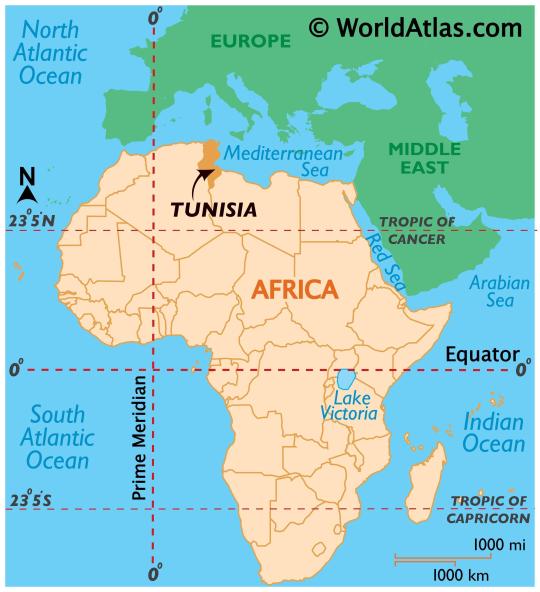
(Tunisia on the map: between Africa and Europe)
Berber, Italian and French Mix
The Jewish community of Tunisia settled mostly in the coastal areas in the cities of Tunis, Sousse, Sfax, Bizerte and Monastir. There were also several rural Berber communities, in which Jews lived a semi-nomadic life.

(The beautiful coast)
The origin of the Jewish community is disputable. Members of the community claim the first settlers migrated from Jerusalem after the destruction of the second temple in 70 CE. Several scholars, however, ascertain that the community originated from the conversion of either Phoenicians or Berber tribes.
Origin aside, archeologists indicate a viable Jewish presence beginning in the fourth century CE. Evidence also shows connection between Tunisian Jews and Jewries in Persia, Israel and Iraq. The Bagdadi community and its Talmudic centers, in particular, was a source of inspiration fueling the local Torah learning, and overall intellectual life.
In the fifteenth century, Andalusian Jews found refuge in Tunisia while escaping the Spanish Inquisition. Their influence is notable in architecture, culture, and clearly cuisine. Another wave of Jewish immigrants arrived to Tunisia from the Italian port city Livorno during the sixteenth and seventeenth centuries. The Livornese Jews, mostly Portuguse Marrano descendants, built maritime trade between North African hubs to European Mediterranean port cities. In 1741, the Livornese community (also called “Grana”) asked for autonomy on the pretext of having a different liturgy. Followed by this act, two separate communities- native and Livornese- were formed. The two sub-communities had their own rabbis, synagogues, cemeteries and philanthropies. The Livornese section, which actually encompassed all European Jews whether they came from Italy, France, Gibraltar or Malta- prided themselves as superior. They refrained from intermarrige with the native Jews, refused to speak Judeo-Spanish and continued speaking Italian. Some of the Livornese became rich bankers and merchants, but many were weavers, tailors, shoemakers, and even lived in poverty relying on charities.
In the cities, since Medieval times, the indegenous Tunisian Jews, lived in the margins of the Muslim areas and the Souks, in quaters named Haras. The Haras became overpopulated starting in the second half of the nineteenth century with poor sanitary conditions, and no running water nor electricity. The residents of the Hara were mostly craftsmen- tailors, potters, leatherworkers and silversmiths. Those who could afford it, left the Hara to settle in the European quarters built by the French.
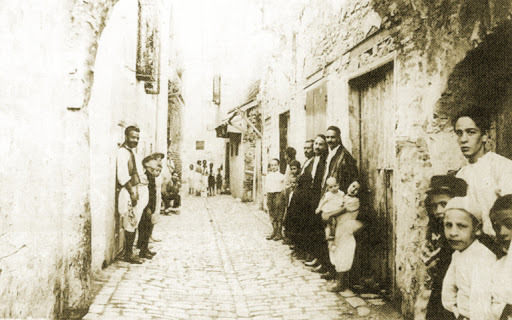
(The Hara of Tunis, image #1)
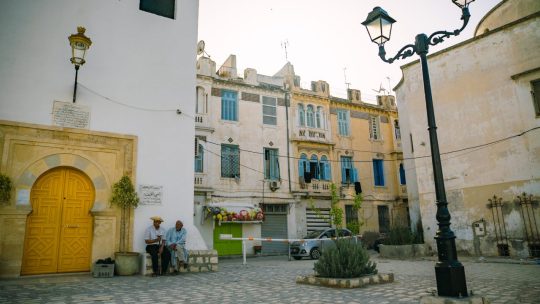
(The Hara of Tunis, image #2)
The French Colonization, starting in the late nineteenth century, created a new elite of Francophones. The upper Jewish class eagerly fostered French as their mother tongue, named their children in French names and sent their children to schools in Paris. The few, who managed to obtain key posts in the new colonial governments, were granted French citizenship, but the majority including some of the wealthiest families remained with the status of subjects.
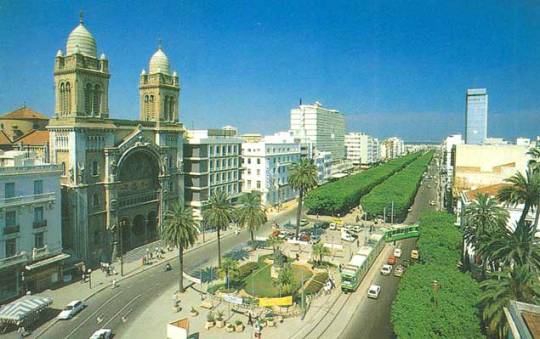
(The French Quarter of Tunis)
Despite the strong French influence, Tunisia continued to be fairly diverse as a port country luring people from different parts of the Mediterranean basin. Thus, the Jewish population (unlike their brothers in neighboring Algeria) lived in a multicultural environment, in which Greeks, Maltese, Italians and of course Arabs co-existed and influenced one another.
A Boy in a Ruthless City: The Nazi Occupation through the Eyes of an Adolecent
The cosmopolitan climate described above was the setting of Albert Memmi’s (1920-2020) semi-autobiographical novel, The Pillar of Salt. In the book, Memmi, a distinguished philosopher known for his work on Colonial Studies, disguised himself as Alexandre Mordekhai Bennillouche, a poor Jewish boy growing up in the Hara of the capital, Tunis.
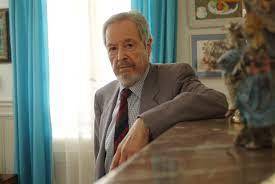
( Albert Memmi)
Bennillouche (or Memmi) begins his account in describing his happy childhood as an age of innocence and unawareness to his poverty and inferior status as a “native Jew”. Gradually, the protagonist discovers the world around him. He excels at school, but suffers from anti-Jewish violence from Chirsitan and Muslim peers. Given his academic performance, he is given a stipend to study in one of the city’s top schools, where he is introduced to the upper circles of the Jewish community and the general European society. This exposure causes a rift in the relationship with his parents, who resent his education wishing for him to continue the family leather business. Although deeply ashamed of his parents - their meager existence and traditional views- Bennillouche is quickly disillusioned from the enchantment of the elite. Being a critical thinker, he spots its insincerity and snobbery, yet he is forced to hide his contempt as he is dependent on their funds for his schooling.

(The capital- Tunis)
The six month Nazi occupation of Tunisia (November 1942- May 1943) reaffirms Bennillouche’s beliefs about the hypocrisy of the elite. During the short- yet traumatic - German presence, Tunisian Jews were subject to constant harassment from the occupiers and general population, and were under the imminent threat of being deported to the death camps in Europe. Yet, the degree of Jewish misery varied based on socio-economic belonging. When the Germans issued a decree for Jewish forced labor, the wealthy ones of the community paid ransom to exempt themselves and their dear ones. Impoverished men- however- were destined to greater hardship.

(Jews assigned for forced labor)
Benillouche (and Memmi himself) was one of the unfortunate people. Despite being friendly with people in high places, and holding a prestigious teaching position, he was deported to a concentration camp in the Saharan desert. There, he suffered from the brutality of the guards, the senseless work, and above all the merciless sun. However, camp was also a place of revelation. The hardship created a sense of comradery between Benillouche and his fellow inmates, of whom he shared similar upbringing. He was even reunited with some old friends, and enjoyed conversing with them in his childhood dialect of Judeo- Arabic, which he neglected in favor of French. In addition, the camp helped him to rediscover and reconnect to his Jewish roots, as he was asked to lead Shabbat prayers as the camp’s intellectual figure.
By the time the camp was released by the Allies, Bennilouche was a more grounded man. He still continued to march according to his original trajectory in the academic world but with a wiser outlook on life.
Topped with Harissa: A Quick Peek to Jewish-Tunisian Cuisine
Even while estranged from his family traditions, Bennilouche always maintained a fondness for his mom’s traditional Tunisian cooking. In fact, he recounts nostalgically the smells of Shabbat dishes cooking slowly in the tiny kitchen of his childhood home. When he matures, he recognizes the power of food as a source of comfort and festivity in a household that is poor and filthy. One of the dishes he highlights is Bkeila (also pronounced Pkeila) - a hearty spinach and beans stew served vegetarian or with beef. Below is Yotam Ottolenghi’s take on it from his latest cookbook Flavor.
Bkeila, Potato and Butter bean Stew - Adapted from Flavor
(See my notes below to simplify the cooking process)
4 cups (80 gram), roughly chopped cilantro
1 ½ cups (30 gram) parsley
14 cups (600 gram) spinach
½ cup (120 ml) olive oil
1 onion (150 gram), finely chopped
5 garlic cloves, crushed
2 green chiles, finely chopped and seeded
1 tbsp plus 1 tsp ground cumin
1 tbsp ground coriander
¾ tsp ground cinnamon
1 ½ tsp superfine sugar
2 lemons: juice to get 2 tbsp and cut the remainder into wedges
1 qt/ 1L vegetable/ chicken stock
Table salt
1 Ib 2 oz/ 500 gram waxy potatoes, peeled and cut into 1 ¼ inch pieces
1 Ib 9 oz/ 700 gram jar or can of butter beans, drained
1.In batches, put cilantro, parsley and spinach in a food processor until finely chopped. Set aside.

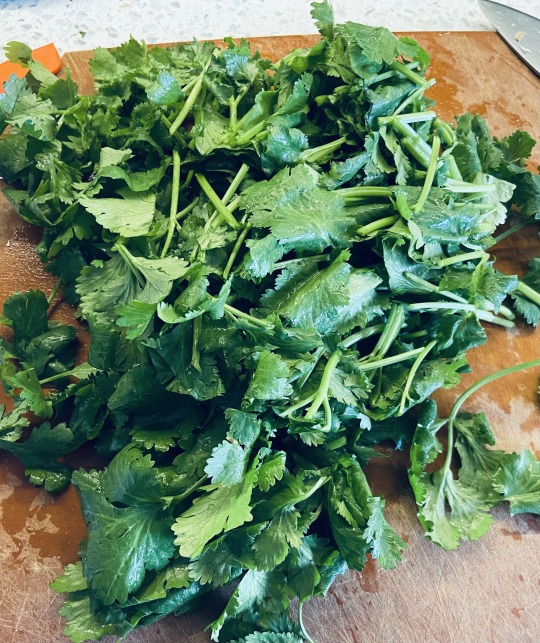
(Massive amounts of greens)
2.Put 5 tbsp of olive oil into a large heavy-bottomed pot on medium heat. Add the onion and fry until soft and golden, mixing occasionally (about 8 minutes). Add garlic, chillies and all the spices and cook for another 6 minutes, stirring often.
3.Increase the heat to high and add the chopped herbs and spinach to the pot along with the remaining 3 tbsp olive oil. Cook for 10 minutes, stirring occasionally until the spinach turns a dark green. The spinach should turn a little fried brown but not burn. Stir in the sugar, lemon juice, stalk and 2 tsp salt. Scrape the bottom of the pot if needed. Bring to a simmer, then decrease heat to medium and add the potatoes. Cook until they are soft for about 20-25 minutes and then add the butter beans and cook 5 minutes longer.*
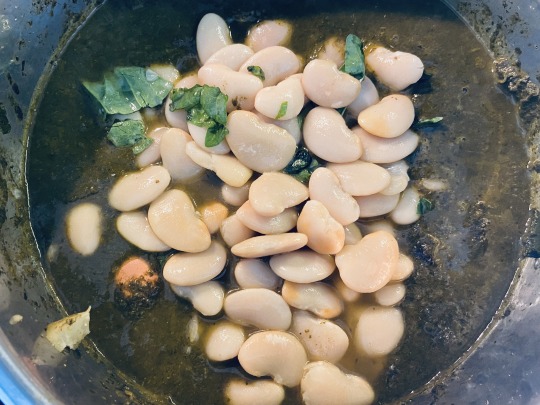
(Butter beans to break the deep green)
4.Divide into bowls and serve with lemon wedges.**
* As this dish was traditionally slow cooked using a slow cooker pot or a pressure cooker could easily do the trick. If using these- do the following: Skip step 1. Saute the onions, garlic, chilli and species as instructed in step 2. Then add the rinsed spinach and herbs. Mix them well with the onions and spices in the bottom. Once the spinach begins to melt, mash them using a hand blender and then add the ingredients described in step 3 (beside the butter beans). Then let it slowly cook until everything softens. In the end, add the butter beans and press on the “stay warm” button.
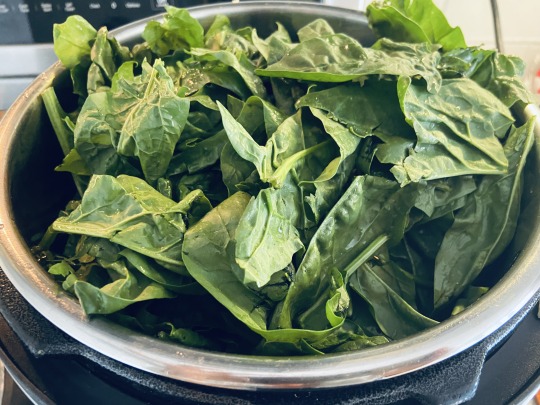
(loading the pot with spinach)
** I served it with bulgur to soak up the liquids a bit (rice, farro or any other grain will work as well). I also added hard boiled eggs for additional protein.

(Healthy and heart)
In addition to the Bkeila- The Tunisian Shabbat table will not be complete without the famous couscous. The process of making it from scratch without a food processor was quite laborious, but the result - whether served sweet with nuts and spices, or savory with meat stew or fish - was considered a delicacy.
The proximity to the Mediterranean shore brought fish dishes to the Jewish- Tunisian repertoire. Fish is mostly eaten fried or cooked as fish balls or oven roasted served with red hot sauce. Meat is also often served spicy, and often chunks of hot merguez sausage are added to stews or shakshuka.
Generally speaking, Tunisian Jews are fond of hot flavors, and their cuisine is potentially the spiciest in the diaspora (perhaps only second to the Yemeni). Harissa paste, now increasingly popular around the world - is liberally used to spice up any dish. This fiery red pepper condiment is added - for example- to the famous Tunisian fricassee, one of Israel's most popular street foods. Click here for a recipe for this tuna loaded sandwich, and here to learn more broadly about Tunisian cuisine.
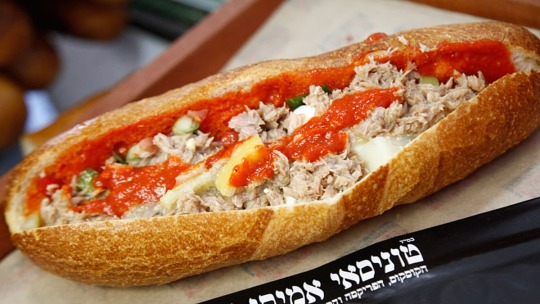
(Tunisian Sandwich with some Harissa)
8 notes
·
View notes
Text
My grandma came over this morning and we started talking about her parents and I started asking about the sort of French they spoke, cause there’s Standard Louisiana French (basically standard French with an accent, if you’re in a French school around here, this is the language you learn), Cajun French (which is descended from Acadian French), and Creole French (a creole dialect that combined a French dialect of Northern France with strong African and Native language influences, since the people who spoke it were typically mixed race or lived in highly interracial communities)
Grandma wasn’t that helpful, cause to her, “they just spoke French”, so I started doing some research. From what I gather, most people in Pointe Coupee, where my family is from, spoke Creole French, which makes sense considering Pointe Coupee was a huge creole hub and it’s likely my family spoke that dialect too. I think this hypothesis it given credence considering my great grandpa spoke a different dialect of French than my great grandma, primarily because his family, while not cajun themselves, lived in heavily cajun area and picked up that dialect. So I started researching and I found both the perfect book on the subject (it’s academic so getting that is gonna wait until cause that price tho) and freaking SO MUCH about Louisiana creole communities on jstor and I’m just in a research hole right now, it’s so cool!
7 notes
·
View notes
Text
Africans and African Descendants Community Hub - Fatherland
Fatherland promote and protect African Art, Culture, Faith, Tourism, and African Tradition around the World and also creating global economic opportunities for the African and African Descendants. Fatherland sees itself as a voice for the African communities, serving all interests.
#Africans and African Descendants Community Hub#Fatherlandglobal#African Art and culture#African Tradition#african history#Teaching for the African context#african culture community#african tribes in america
1 note
·
View note